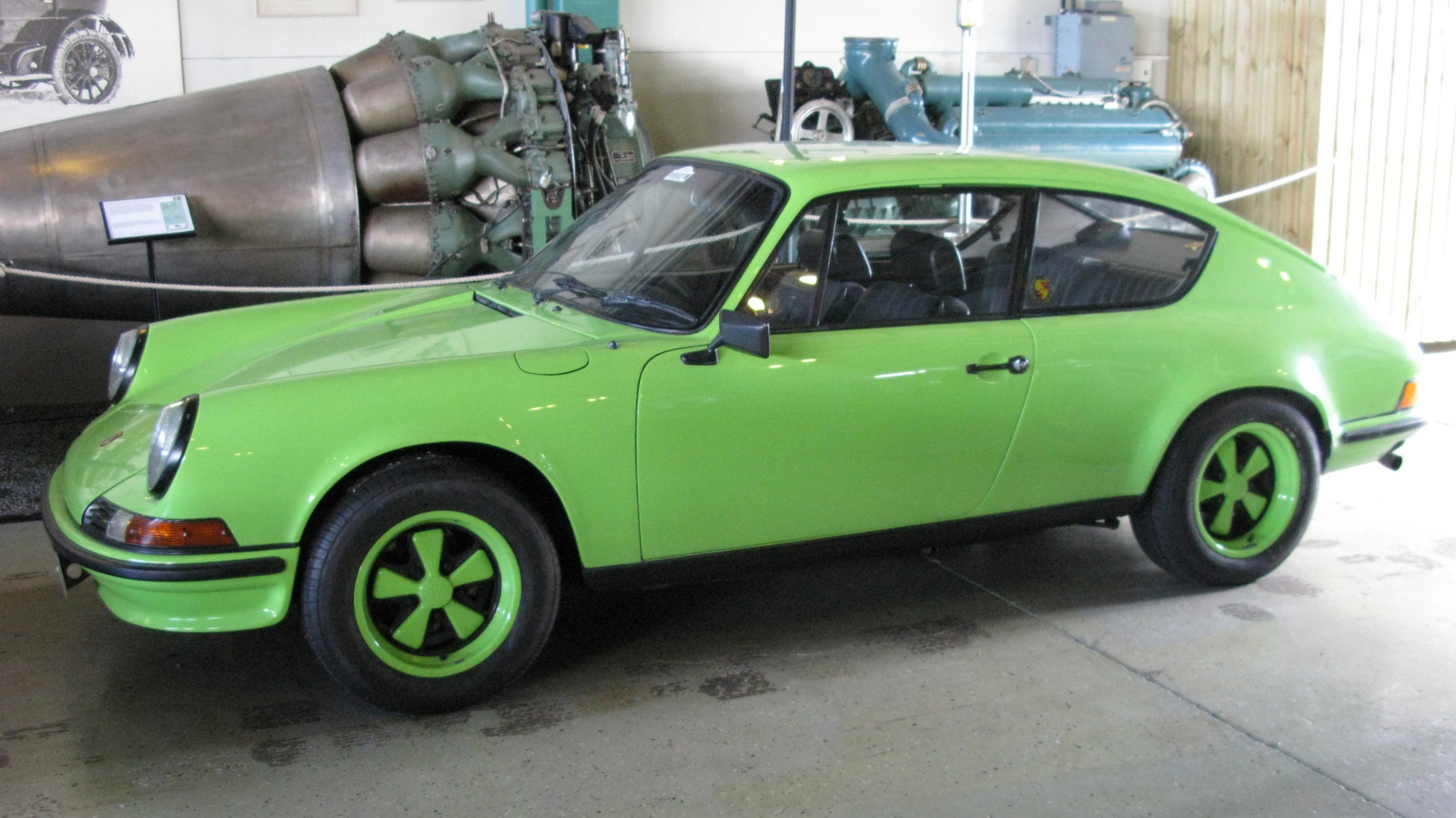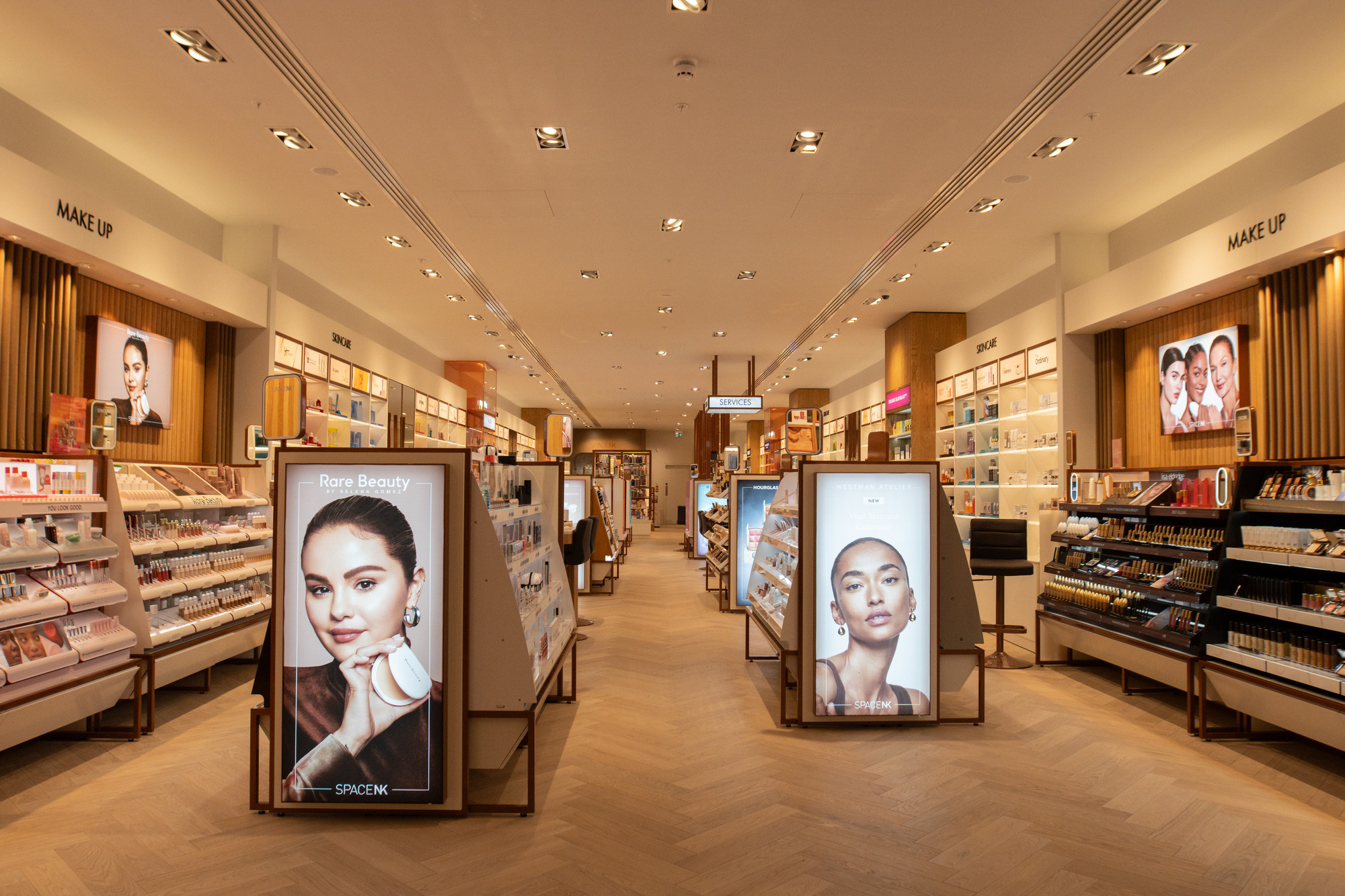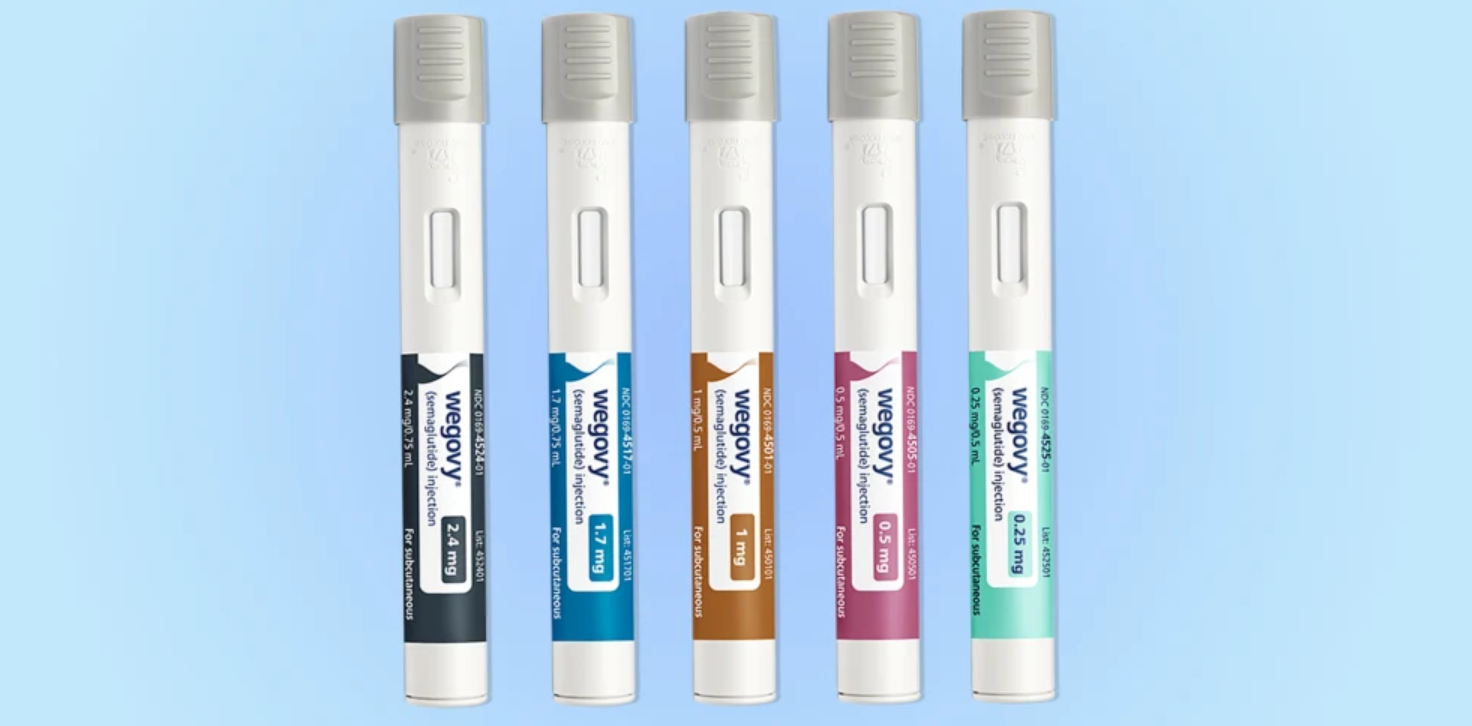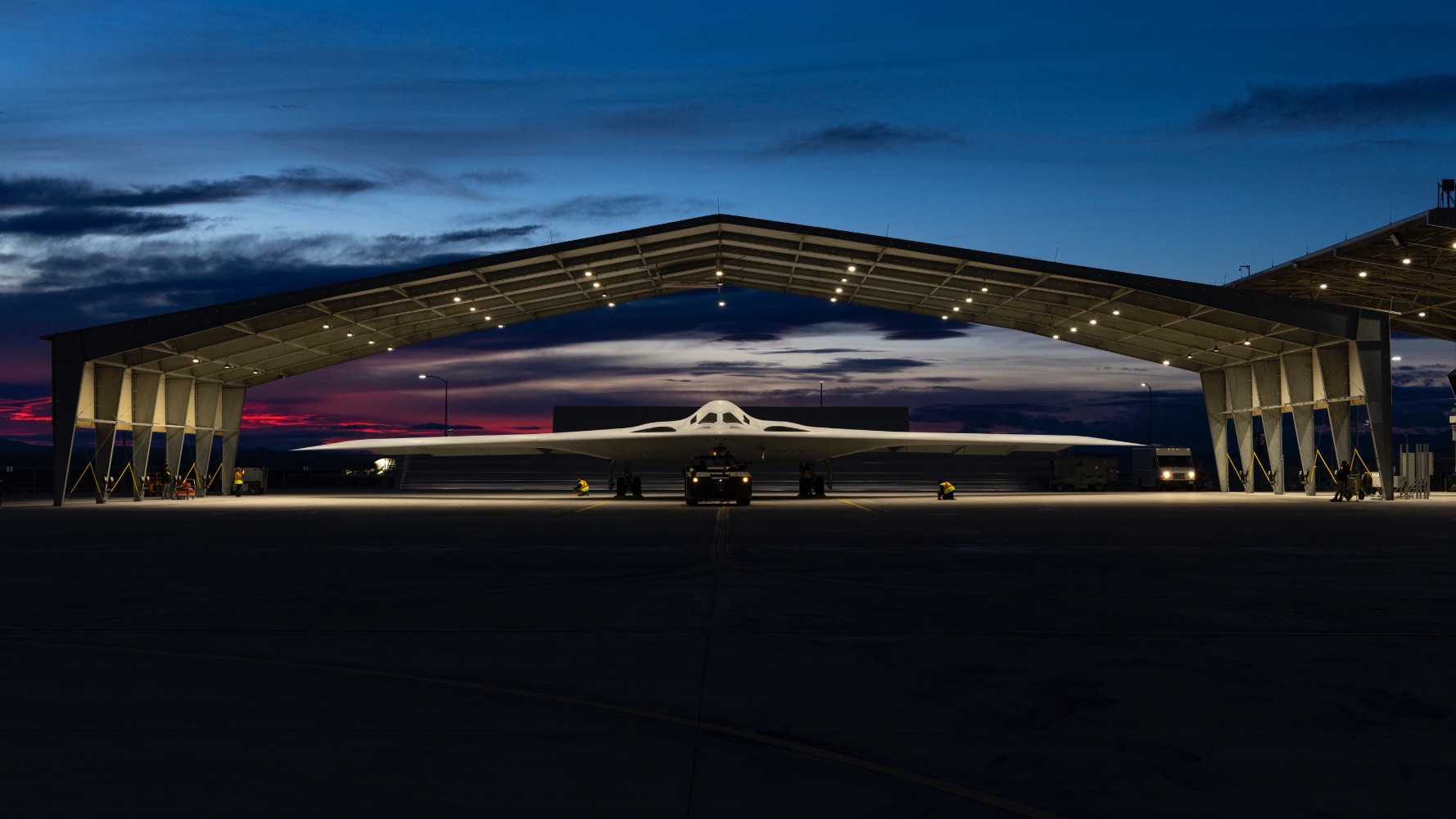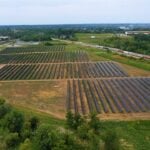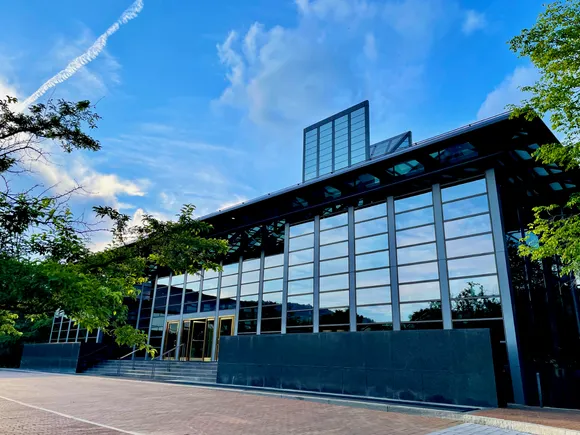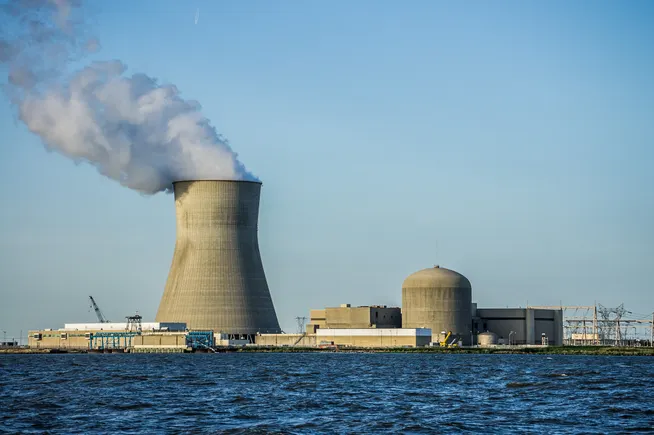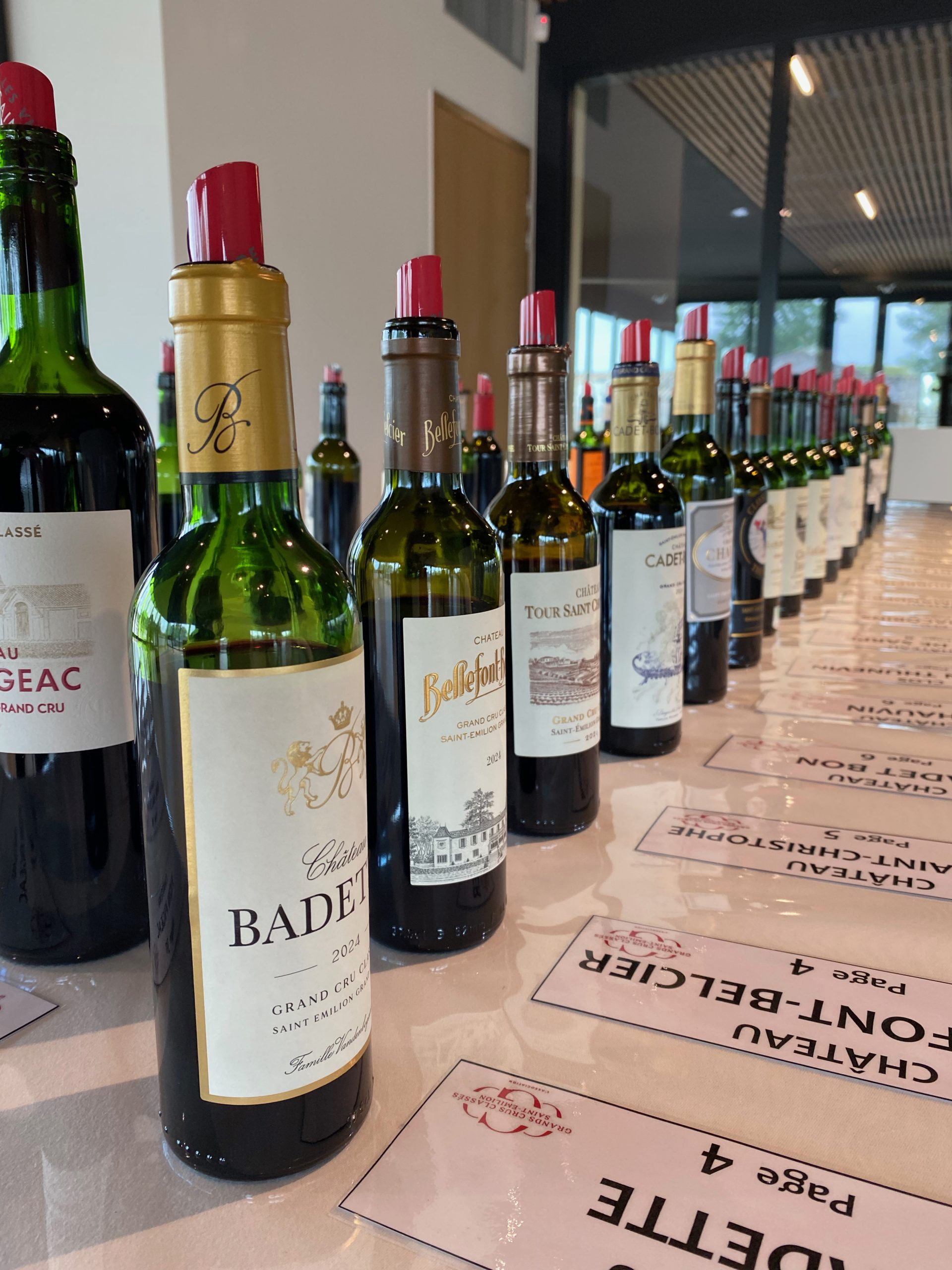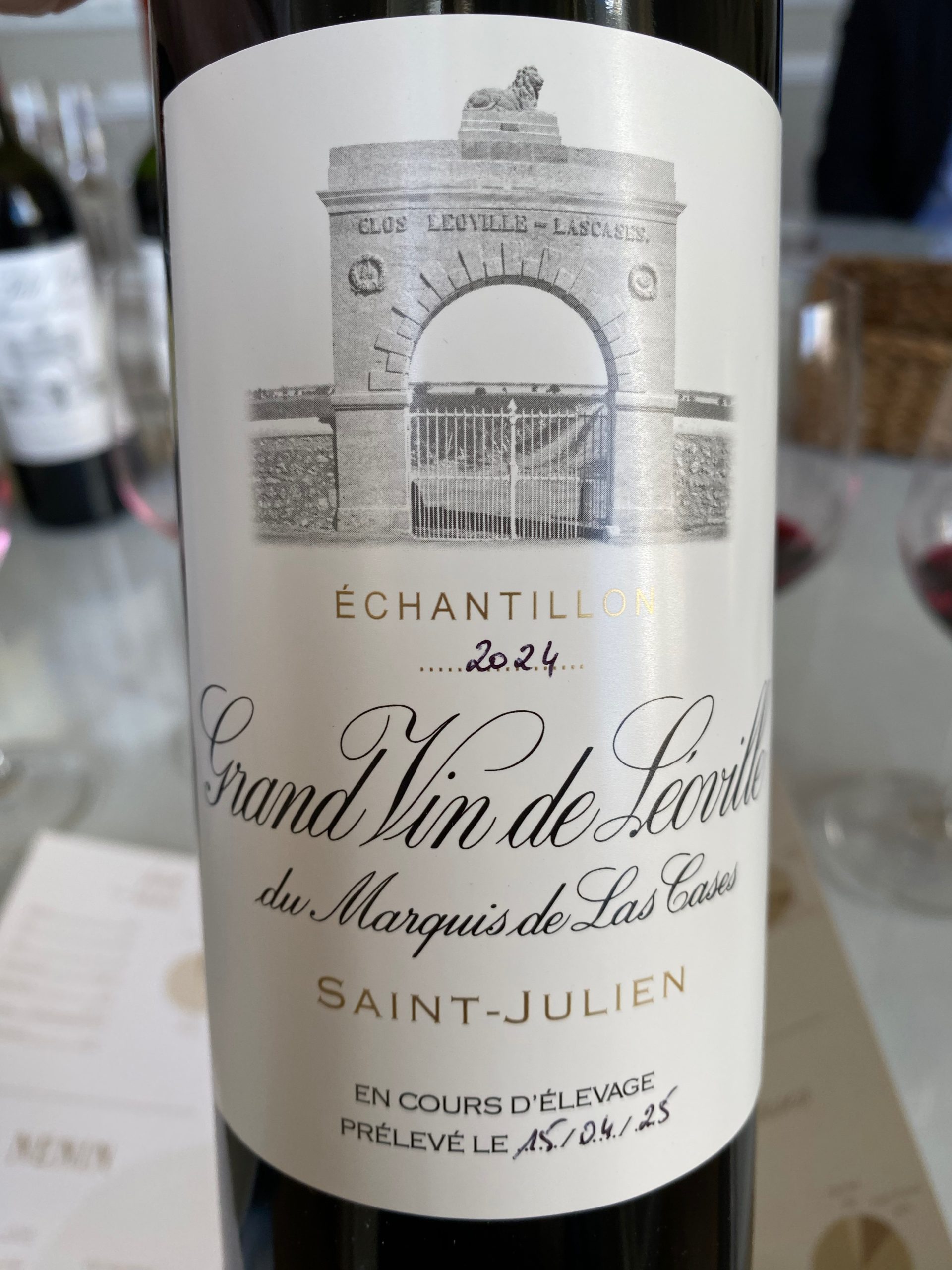Following his review of Pomerol in his appellation-by-appellation guide, here are db’s Bordeaux correspondent Colin Hay’s tasting notes from more than 80 wines.
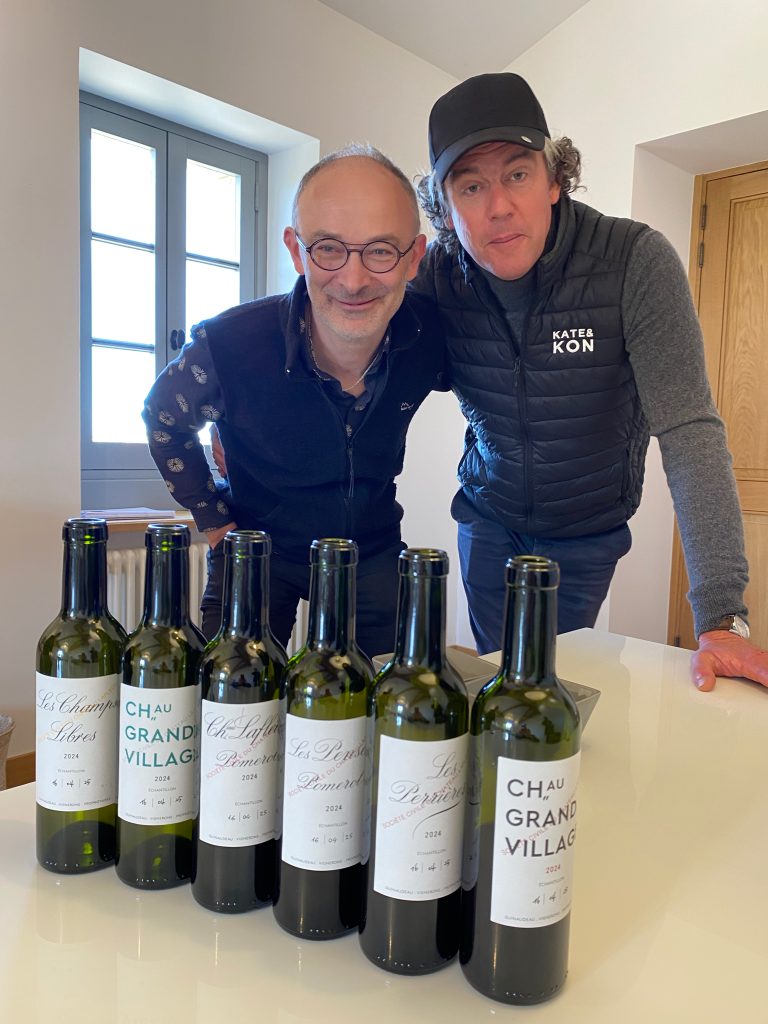
Detailed tasting notes
Château Beauregard (Pomerol; 67% Merlot; 24% Cabernet Franc; 9% Cabernet Sauvignon; a final yield of 22.5 hl/ha; pH 3.65; 13% alcohol; certified organic; tasted twice, first at the UGC press tasting at the Cité du Vin and then at the property with Lauren Laudrin & Vincent Priou). The first in the Pomerol flight at the UGC and we know immediately where we are – in fact, this is an easy pick and that’s a good thing to be able to say in this vintage. Violet and pink rose petals, blueberries, blackcurrants and damsons, a little graphite and blanched almonds. Soft, gentle, with gracious tannins outlining the parameters of quite an ample frame. Juicy and quite sumptuous for the vintage in the mid-palate if lacking the complexity of the bigger, richer recent vintage.
91-93+.
Clos Beauregard (Pomerol; from 6 hectares below Beauregard; 100% Merlot; a final yield of 35 hl/ha; pH 3.7; IPT 65; 13% alcohol). Crunchy fresh red berry fruits – strawberries and a little loganberry, just à point – and that Pomerol ferrous minerality. On the palate, the frame is quite narrow and that helps give this a little gravitas. The fruit seems to darken over the palate which I rather like, bringing additional interest just when it might otherwise seem a little one-dimensional. Nicely judged, if quite light, insubstantial and lacking in complexity.
87-89.
Clos Bel Air (Pomerol; 95% Merlot; 5% Cabernet Franc; from 2.5 hectares next to Bonalgue on the outskirts of Libourne; 100% vinification integrale in oak barrels of 300 litres; 12.5% alcohol). The crasse de fer minerality is immediately evident aromatically. Lush plum and damson fruits, a little blueberry too. On the palate, this is quite linear but generously enrobed with plump and plush berry fruits. A hint of walnut. Considerable tannins but they are never dry and fully ripe, the gentleness of the extraction (using Rpulse) very clear. This has decent aging potential.
89-91.
Blason de L’Evangile (Pomerol; 85% Merlot; 15% Cabernet Franc; a final yield of 21 hl/ha; 13.5% alcohol; tasted at the property with Juliette Couderc). Iron in its minerality. Rich and full, plump and quite full and very true to the new Evangile style. There’s a nice nuttiness to this that is also a signature of the grand vin. A pleasing sense of ripeness too. Not a very ample frame but it is generously enrobed with lovely dark berry and cherry fruits. Not the delineation or detail of the grand vin but still very impressive, even if there’s a little dip in intensity in the mid-palate. Quite chewy and saline on the finish, with a touch of liquorice.
89-91.
Château Le Bon Pasteur (Pomerol; 80% Merlot; 20% Cabernet Franc; micro-vinified in new oak barrels; a final yield of 35 hl/ha; 13% alcohol; Michel Rolland and Julien Viaud are the consultants here; tasted twice, the first at the UGC press tasting). True to its style, this is immediately oaky and takes a while to settle in the glass. It’s nutty too and with a pleasing note of desiccated roses and pot pourri. There’s almost a hint of truffle too alongside the ripe fresh and baked plums and this is a wine that will definitely evolve in that way. Indeed, what’s fascinating about this is that the aromatics and the attack seem to come from a wine that is much older, with almost the sensation of secondary notes emerging. The mid-palate composition and finish are, however, very much those of an en primeur sample. It’ll be fascinating to see how this turns out from bottle. A wine whose ‘heart and soul’ is in Pomerol.
90-92+.
Château Bonalgue (Pomerol; 93% Merlot; 7% Cabernet Franc; a final field 33 hl/ha after densimetric sorting with problems of coulure particularly present; pH 3.5; 13% alcohol; tasted twice, first with Jean-Baptiste Bourotte at Clos du Clocher). Gracious with more fruit complexity than Monregard La Croix, the cherries and blueberries joining the damsons and plums. There’a lovely trace of graphite too. The vein of gravel here helped this deal with the excess rainfall, aiding the final yields. This has a nice sense of fluidity over a broad frame but plenty of depth and a lovely natural sweetness. It’s juicy and sapid with similarities to the 2020 but with more acidity on the finish (the marker of the vintage). The Rpulse extraction works really well here. This used to have quite rustic tannins – not at all in this vintage.
91-93+.
Château Bourgneuf (Pomerol; 90% Merlot; 10% Cabernet Franc; 13% alcohol; tasted at JP Moueix in Libourne). Peony and a hint of violet, blueberry and mulberry with a little black cherry. This is quite ample and pretty extracted in the context of the vintage. But, as a consequence perhaps it comes across as both a little blitzed and blended in its fruit profile and there is a something of a dip in the mid-palate suggesting the fruit has been stretched over too ample a frame. The tannins are soft and gracious and there is much to like here with no dryness or astringency, but this is not at the level of recent vintages.
89-91.
Château La Cabanne (Pomerol; 94% Merlot; 6% Cabernet Franc; a final yield of 26 hl/ha after densimetric sorting; 13% alcohol; on lovely pure argile; tasted twice, first at the UGC press tasting at the Cité du Vin and then with François Estager at the property early on a wet Saturday morning). Floral. Fresh blooms picked this morning. Black cherries. Blueberries. But also bright crunchy red berry fruits. A little scratched leather too. Quite distinctive, with the signature crasse de fer minerality that tells us where we are. A little spice from the small proportion of new oak. The density and concentration is impressive. Indeed, this almost feels – rarely for the vintage – a little ‘blocky’ and foursquare. But the tannins remain soft and finely grained. There’s impressive weight and gravitas for the vintage if never the elegance of some of its more august neighbours (we’re just across the street from Trotanoy). A pleasing grape skin note on the finish.
91-93.
Château Certan de May (Pomerol; 70% Merlot; 25% Cabernet Franc; 5% Cabernet Sauvignon; tasted at JP Moueix in Pomerol). Lovely. Grace and poise with an utterly beguiling cedar and blueberry aromatic profile, a little hint of violet. The palate, as if often the case here, is a little blocky and foursquare but that is, in a way the signature of a property often difficult to assess en primeur. There are quite considerable tannins, still yet fully to integrate but a great deal of potential. A vin de garde that needs a good 10 years.
92-94.
La Clémence (Pomerol). Plump red berry fruits, red cherries too and a little splash of kirsch– not a note I find often in this vintage. This is impressively hedonistic for the vintage and nicely held in balance, even if it seems like a bit of a dangerous juggling act to perform in a vintage like this. There’s a slightly confected floral note and one feels the oak is doing quite a lot of the work in bringing sweetness to this, but it kind of works.
88-90.
Château Clinet (Pomerol; 80% Merlot; 20% Cabernet Franc; a final yield of 38 hl/ha; 13% alcohol; tasted twice, first at the UGC press tasting at the Cité du Vin). This I really like. It’s very true to its identity and also to its terroir signature, if actually a little closer stylistically to L’Eglise-Clinet than it used to be. Intensely floral, with beautiful notes of violet and essence of violet. A touch of dark chocolate. Black cherry, blueberry and walnut oil. Toasted brioche. Cedar, cedar and more cedar. I love the aromatics. On the palate it’s more ample on the attack than as it evolves, with the tannins, always beady and grainy, taking the fruit in charge. That gives this quite a dynamic sense of structure missing in all but the best wines of the vintage. Really excellent. A great success. Approachable young but with considerable aging potential.
93-95+.
Clos du Clocher (Pomerol; 75% Merlot; 25% Cabernet Franc; a final yield of 34 hl/ha; pH 3.52; 13.2% alcohol; the first year certified organic and the 100
th anniversary since the purchase in 1924; tasted with Jean-Baptiste Bourotte at the property). Aromatically gorgeous with blue fruits, cedar and graphite and a little black and red cherry, a touch of red liquorice too. With aeration there’s a little damson and damson skin, grape skins too. Really lush, plush and plump. Mouth-filling and cheek-pushing! The considerable amplitude gives the fruits and freshness space to ripple and dance, little tourbillons (swirls) of freshness bubbling and rippling up from below. This has great density and concentration in the mid-palate; but it’s lifted and energetic too. Liquorice – now black – on the saline finish and a well-shaped aerial plume. Succulent, lithe and limpid, the quality of the tannins is exceptional. There’s a hint of menthol on the finish too.
92-94+.
Château La Connivence (Pomerol; a garden vineyard of just 1.4 hectares next to Belle Brise on a small gravel slope; 70% Merlot; 30% Cabernet Franc; a final yield of 37 hl/ha; 13.4% alcohol; tasted at La Gaffelière with Alexandre de Malet Rocquefort). Succulent, plump and plush with a gorgeously soft and aromatic black cherry and blueberry fruit. I love the radiant violet and rose petal note. Saline in its minerality too, even aromatically. Naturally sweet, plump on the palate, this pushes the cheeks but is also generously filled to its centre with fresh, vibrant and quite dense and compact berry and stone fruits. Intensely sapid and juicy on the grape skin finish. Succulent and almost opulent, which is rare in the vintage. Authentic and accessible.
92-94+.
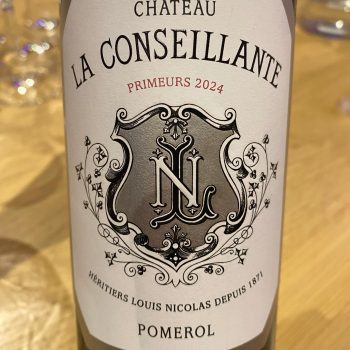 Château La Conseillante
Château La Conseillante (Pomerol; 80% Merlot; 20% Cabernet Franc; a final yield of just 22 hl/ha due to the losses arising from coulure and millerandage associated with the slow and long floraison after an early débourrement and difficult pollination requiring for the first time densimetic sorting calibrated at 12.5% alcohol, with 20% of what was harvested rejected; there was no significant problem with mildew; pH 3.57; 9% vin de presse; aged in oak barrels, 70% new; 13.5% alcohol; tasted at La Conseillante with Marielle Cazaux). Fabulous aromatics. Violet and the parfumier’s essence of violet. Incense too. Rose petals and, again, their parfumier’s essence. Black cherry and confit blueberries. A little hint of the cedar to come and a trace of graphite (if graphite comes in traces). Super-svelte on the attack, with ultra-fine grained and gracious tannins, the first inhalation of air bringing the violets back into the core of the dark berry and stone fruits. Compact and nicely concentrated. Supple and limpid over quite an ample frame. Very classical but also even more intensely floral than ever. The tannins stay just – but only just – the right side of dry which is my only slight qualm. Serene. This has been expertly managed and is very beautiful whilst remaining entirely true to the style of both the vintage and La Conseillante. Excellent.
94-96.
Château La Croix (Pomerol; 60% Merlot; 20% Cabernet Franc; 20% Cabernet Sauvignon; from Joseph Janoueix’s vineyard of 10 hectares in Catusseau between Beauregard and Nénin in the heart of the appellation on a gravel terroir). Very classical in a way, and a success in the context of the vintage. A lovely quite expressive nose of wildflowers, wild herbs and dark berry fruits, blackcurrant and bramble. This feels pleasingly ripe, and the mid-palate actually builds as the wine inhales. The finish is clean, precise, quite aerial and with no dryness. Simple but very well made and very expressive of its terroir and appellation.
90-92.
Château La Croix du Casse (Pomerol; 95% Merlot; 5% Cabernet Franc; 14% alcohol; tasted at Batailley with Frédéric Castéja). Iron-rich in its crasse de fer minerality. Quite sweet-fruited, with dark plums and assorted red berries. I find this very direct, honest and authentic. There’s a lovely freshness too, that vivifies the mid-palate just when one is looking for a little further interest. Just a slight hint of residual sugar.
89-91.
Château Croix de Gay (Pomerol; 97.5% Merlot; 2.5% Cabernet Franc; a final yield of 34 hl/ha; 12.5% alcohol; tasted twice, first at the UGC press tasting at the Cité du Vin). Ferrous in its minerality, as ever – very crasse de fer! A little oyster shell and iodine and then, too, a distinct hint of horsehair and straw. Very distinctive. Quite ample on the attack and that gives the fruits the space to glide and dance, rendering this more crystalline that in vintages with more density. You have to like the mineral signature of the terroir here, but this is very well made.
90-92.
Château La Croix Saint-Georges (Pomerol; 100% Merlot; from Jean-Philippe Jonoueix; tasted just the once at a négociant tasting). There’s a certain new temperance here! A lovely intense damson, Griotte cherry and blueberry fruit, very pure, fine and precise – indeed, in almost pixilated detail. I prefer this to the 2023. It’s very direct, authentic and expressive, finely layered too. I like the eloquent crystallinity of the fruit as it flows over the plate very much. The only slight downside is the hint of dryness on the finish. But there is no mistaking the elegance of this, the oak much more moderated than it used to be.
91-93+.
Château La Croix Toulifaut (Pomerol; 85% Merlot; 15% Cabernet Franc; a tiny property of 1.9 hectares contiguous with the much larger La Croix estate; from Joseph Janoueix; now certified organic). I have very fond memories of the 1998 (reinforced by the image of the wonderful etching on the label) and I rather like this too. It’s richer and deeper than La Croix, with less dark berry fruits and more plummy notes – damsons and a little crushed blueberry. It’s more creamy in texture and it has a pleasing viscosity, suggesting ripe fruit and little or no chaptalisation. Long and gently tapering on the finish, there’s lot to like here even if it’s far from the most complex of wines.
90-92+.
Domaine de L’Eglise (Pomerol; 98% Merlot; 2% Cabernet Franc; 14% alcohol; tasted at Batailley with Frédéric Castéja). Dark plummy fruits – damsons, a little black cherry and some blueberry and mulberry too. Walnut oil and a lovely hint of violet and a touch of cedar. Chewy on the finish. Nicely done but perhaps missing a little density in the mid-palate.
90-92.
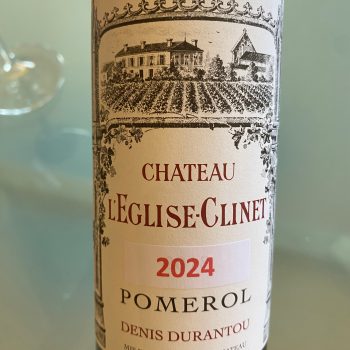 Château L’Église Clinet
Château L’Église Clinet (Pomerol; 90% Merlot; 10% Cabernet Franc; aging in oak barrels, 85% of them new; 13.8% alcohol; tasted with Noëmie Durantou at L’Eglise Clinet). A brilliant achievement from Noëmie Durantou and Olivier Gautrat. If anyone was going to rise to the multiple challenges of this vintage it was going to be them. They have. Initially introvert and subtle. It demands calm respect, and you have to come to it. A little spiritual in a way. It’s refined and very beautiful, with a delicate and beguiling florality – incense (as in La Petite Eglise), but just a little more here, violets, rose petals and peony, all very fresh. Black cherries, blueberries, mulberries and black berries, again as if painted in pixilated detail. Graphite and cedar enrobe the fruit but also allow it the space it needs. There’s a slight hint of wild freshly picked herbs and even a touch of heather. Texturally sublime. Incredibly soft on the entry, but that softness comes as even more of a surprise because of the intensity, density and compactness of the mid-palate. Spherical at the core, with pixilating tannins that help one focus in on and pick out the details from the dense cylindrical core of the palate. As it opens, however, it’s as if one starts to pick out the velvet layers and that changes a little the impression of the form and structure of the wine, rendering it both more ample and accentuating the sense of depth and profundity. A wine that transcends the vintage. Unique and rather different in its identity than the other superstars of the Pomerol plateau; it’s actually more like Petrus than anything else (but the Cabernet Franc really speaks here too). Gracious and ethereal yet serious, intellectual and in great harmony with the vintage.
95-97+.
Château L’Enclos (Pomerol; 88% Merlot; 10% Cabernet Franc; 2% Malbec; certified organic and in conversion to biodynamic, this is the sister property of the rising star that is Fonplégade in St Emilion; situated on the western slope of the Pomerol plateau; aged in oak barrels, 30% of which are new; 13% alcohol). Immediately enticing aromatically, with a natural sweetness to the plump, ripe, red berry fruits. There’s a brightness and a lift and energy to this that seems to convey the health of the vineyard. Focussed, precise and very pure with an almost glassy, crystalline texture. Some will crave more flesh and viscosity, but I rather like this refined, elegant yet vivid and fruit-forward style.
90-92+.
Enclos Tourmaline (Pomerol; just 1.2 hectares on blue clay and gravel close to Le Pin; 96% Merlot; 4% Cabernet Franc; a final yield of 30 hl/ha; pH 3.45; 100% vinification intégrale in new oak; 13.5% alcohol; tasted at Bellefont-Belcier with Emmanuelle Fulchi and Jean-Christophe Meyrou). Interesting. Quite nutty at first, with even a hint of salted peanut brittle! Red cherries, blueberries and mulberries. Ultra-pure with a lovely mouthfeel. Very soft but at the same time tactile, with transparent layering achieving a kind of glossy glassy-ness. Brilliant in its freshness and éclat. Elegant, enticing, energetic and very impressive. Classy, sleek and super-stylish.
93-95.
Château de l’Evangile (Pomerol; 80% Merlot; 19% Cabernet Franc; 1% Cabernet Sauvignon; a final yield of 21 hl/ha; 13.5% alcohol; tasted at the property with Juliette Couderc). A little closed for now. Puissant, bold, round and rich. Serious in the context of the vintage but not in terms of austerity, just in terms of amplitude and range and depth and profundity. Black cherries form the core of this but within that core we have lovely more lifted notes of black currant and bramble. With aeration lovely cassis too. I find this very ‘plateau Pomerol’ in its ripeness. Nutty, as ever. Powerful but refined, with that dusting of salinity that one finds in Blason too. Sapid and with an added sense of energy that seems to come from the organic viticulture.
92-94.
Château Fayat (Pomerol; 85% Merlot; 15% Cabernet Franc; from around 40 different parcels on a variety of terroirs, amounting to around 12.7 hectares; a final yield of 39hl/ha; pH 3.65; 14.5% alcohol). There has been a lot of excellent work going on here in recent vintages and I hope this property will soon start to acquire the attention it merits. It is a sister estate to La Dominique in St Emilion and there are evident similarities in both the style and the steep upward trajectory. This feels like the vintage in which it all comes together. The intensity of the violet florality really wows, as does the beautiful blueberry fruit signature. And there’s cedar too. The tannins are ultra-refined and glossy, and this is long and balanced. Possibly the best I’ve ever tasted from here and to achieve that in the context of this vintage is special indeed.
92-94.
Château Feytit-Clinet (Pomerol; 88% Merlot; 12% Cabernet Franc; from a well-situated vineyard just down the hill from Clinet and Eglise-Clinet and opposite Latour à Pomerol; a final yield of 33 hl/ha; pH 3.70; 13.5% alcohol; tasted twice, first from a sample sent to me in Bordeaux). Initially quite oaky at this early stage but with a deeply impressive core of intense crushed dark berry and stone fruits – blueberries and black cherries – and, as it opens, the oak seems to be replaced by the violets. Beautiful. I liked the 2023 very much and I love this too. It’s one of the sweeter wines in and through the mid-palate which makes it seem like a bit of a vintage outlier, but those confit floral elements are very true to Pomerol, and, in a way, this seems to transcend the challenges of the vintage.
92-94.
Château La Fleur de Gay (Pomerol; 88.5% Merlot; 11.5% Cabernet Franc; 13% alcohol; tasted just once at the offices of a Bordeaux négociant). Violets. Blueberries. Griotte cherries. A little sweet spice from the oak and a little iron minerality – the crasse de fer perhaps a little more demonstrative than it usually is. Precise, focused and quite limpid. There’s not quite the sparkle and vivacity in the mid-palate of 2020 or 2022 but I like the choices made here.
91-93.
Château La Fleur-Pétrus (Pomerol; 99.5% Merlot; 0.5% Petit Verdot; tasted at JP Moueix in Libourne). There is no Hosanna this year, nor Lagrange à Pomerol nor La Grave. But this is beguiling and beautiful with a very pure lilac and violet floral aromatic profile enrobing the dark berry and damson fruit. Cedar and a little graphite with aeration. Plump, plush, succulent and very gracious in its limpid, sinuous evolution over the palate. Cool and crystalline. Sapid and saline on the finish. Truly gorgeous and capturing the subtle beauty and elegance of plateau Pomerol at its best.
94-96.
Fugue de Nénin (Pomerol; 97% Merlot; 3% Cabernet Franc; a final yield of 35 hl/ha; 9.2% vin de presse; IPT 51; pH 3.60; 13% alcohol; tasted at Nénin). Bright, intensely dark berry fruit. Simple but very nicely done. Quite plump and lush on the attack, but then the acidity kicks in a little and it comes as a slight shock, but thereafter the wine recovers its form. The tannins are incredibly soft, and this is excellent at its level when set in the context of the vintage.
87-89.
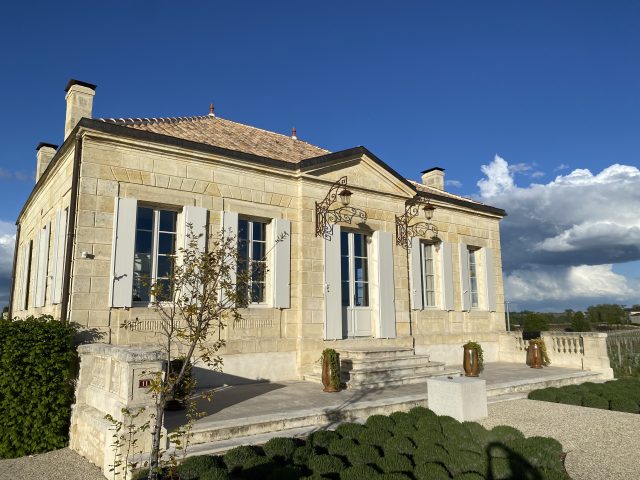 Château Le Gay
Château Le Gay (Pomerol; 81% Merlot; 19% Cabernet Franc; a final yield of 18.4 hl/ha from the 10.4 hectares in production; 13.5% alcohol; tasted twice, first at the UGC press tasting at the Cité du Vin and then with Henri Parent at the property). Plump, plush, densely charged and packed with cherry and dark berry fruits, with the Cabernet Franc more present when re-tasted at the property. A little lilac too. Dried flowers and pot pourri. Leather and tabac. Frangipane and toasted almonds. This is big, bold and distinctive in the context of the vintage. The careful management of the extraction has allowed much more volume in the mouth and viscosity than in almost all wines of the appellation in the vintage, but without any astringency or dryness which is impressive indeed. Chunky, which is not a descriptor I’ve yet used in this vintage! But it is also sapid and refreshing on the finish, with a menthol life right at the end.
92-94.
Château Gazin (Pomerol; 90% Merlot; 10% Cabernet Sauvignon; a final yield of 23.4 hl/ha; 13.5% alcohol; tasted twice, first at the UGC press tasting at the Cité du Vin). I come to this with a certain sense of anticipation, as it’s a wine that seems to be in the process of changing its style and identity. In fact, here I find it very true to its terroir – a nice balance between the past and the present. It’s certainly more restrained, elegant and balanced than it was, more floral and refined and the accent on the ferrous minerality of old is replaced here with an accent on floral notes – violet and rosewater. The fruit is succulent and juicy and there’s impressive density but without losing the fluidity and sinuousness of the vintage. Pure, precise and crystalline, this is very impressive. It’s on the verge of losing its shape just before the finish, but the pinch of the tannins, the release of juicy freshness that follows gathers this back up into a lovely plume that gives this added length. Nicely managed.
92-94.
Château Guillot-Clauzel (Pomerol; 80% Merlot; 20% Cabernet Franc; a final yield of 30 hl/ha; 33% new oak; 13.5% alcohol). This has lovely gravel terroir notes, like its neighbour Le Pin in a way, but with the lift and freshness and directness of Vieux Château Certan! Very pretty aromatically. Fleurs de vigne. A more bulby floral note too – peony and wisteria. This is a little more red berry fruited than VCC. It’s also more crunchy (croquant) and has great authority and purity. Red cherries and cherry blossom. Wild strawberry. A little blueberry. On the palate this it vertical, tense and taut from the start but with more softness and gravitas lower down the palate where the tannins, a little like Le Pin gather up the fruit, drawing it towards the bottom of the palate. Really special and very close to the level of VCC, if with a slightly different fruit profile. Purity, precision and finesse.
94-96.
L’Innocence de Séraphine (Pomerol; 65% Merlot; 35% Cabernet Franc; 13.3% alcohol; just 4500 bottles and a little over half of the total production of this 2.2 hectare estate). Sweet-fruited aromatically, with a subtle hint of vanilla pod and sweet spices dusting the dark berries and the red and darker stone fruits. A hint of cedar, but really just a suggestion. This is fine, but it lacks both the complexity and the mid-palate delineation of the grand vin. When you taste the two together you understand (and respect) the choices made.
87-89.
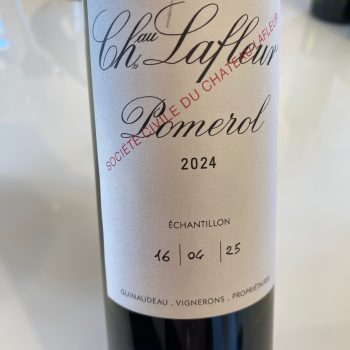 Château Lafleur
Château Lafleur (Pomerol; 45M; 55B; high yields of around 40-42 hl/ha; 13.4% alcohol naturally; tasted at the property with Baptiste and Julie Guinaudeau, Omri Ram and Ralitsa Todorieva). The task here according to Baptiste Guinaudeau and Omri Ram was to provide a buffer between the weather conditions and the vines, absorbing the meteorological shocks of the growing season to produce as normal a vineyard cycle as possible to aid ripening. It’s the vineyard equivalent of Keynesianism – counter-cyclical vineyard management! Accepting the early start and, in this case also, longer growing season was also crucial (with February, in effect, now viewed as the first month of Spring). The story here is one of rapid adaptation to unprecedented circumstances – such as the earliest mildew pressure ever and root asphyxiation in the second half of April, necessitating the opening of the soil to encourage the vines to resume growth in preparation for what would otherwise have been a very difficult floraison. The results are spectacular. This is vintage transcendent and utterly gorgeous aromatically. Opulent in its florality, this is a wine of staggering depth and concentration. Red and black cherry, cassis and blackcurrant, bramble, blueberry. Blood orange. That generous and radiant florality – both petals (rose, violet and mimosa) and bulb (iris and peony). Sublime aromatically, ever more so with aeration, this is a wine that grows and grows – and then grows some more – in the glass. So generously sweet and complex in its fruit profile. More and more cherry notes come through building a very natural tension with the fresher darker berry fruits that establish themselves first. A wine with incredible concentration and impact on the palate and a glorious succulence and a natural sweetness too. For Lafleur at this stage I find it wondrously vivid, especially when the tannins engage, breaking the surface of the compact spherical core and releasing little fountains and springs of freshness. On the finish the vibrant sapidity and inherent juiciness form itself into waves, lapping on the shore, seemingly for ever …
96-98+.
Château Lafleur-Gazin (Pomerol; 100% Merlot; tasted at JP Moueix in Libourne). The point (each year there is one) in the Moueix line-up where we step up a notch in our climb towards the summit. A lovely combination of violet florality and creamy fresh plump blueberries, with a little hint of cedar. Very little of the briny ferrous minerality than can destabilise this wine in its youth. Glossy, polished, with quite a slender frame, this is a rather succulent and very juicy and enticing Pomerol that I really like in this vintage.
90-92+.
Château Latour à Pomerol (Pomerol; 100% Merlot; tasted at JP Moueix in Libourne). Expressive and quite lifted aromatically, with a gracious red and darker berry fruit and a little damson. Cedar and a delicate waft of violet remind us of where we are and the violets build and build with gentle aeration – and as they do so they are accompanied, more and more, by a similarly gentle rose petal note. All rather beautiful. Gracious and soft on the attack with quite an ample frame, this is excellent. It lacks the precision and detail in the mid-palate of the very best vintages here, but the mouthfeel is luxuriantly succulent and there’s a pleasing juiciness on the finish.
91-93+.
Château Maillet (Pomerol). A bit of a bell-weather wine for me and I like its plump black cherry, blueberry and blueberry fruit profile very much. I like too the hint of peony and the cedar that comes through with more aeration. There’s quite a lot of substance to this which means that the fruit density covers the oak well – it can be a little less subtle here. A shade towards the dry side on the finish but this has, overall, been very well managed and will make for one of the more hedonistic wines of the vintage.
90-92+.
Château Monregard La Croix (Pomerol; 100% Merlot; a final yield of 36 hl/ha; 30% new oak; 12.8% alcohol with no chaptalisation; tasted twice, first with Jean-Baptiste Bourotte at Clos du Clocher). Blue and purple fruits. Energetic, broad framed and juicy. Layered. Soft and sweet-fruited, fresh and delicious. A lifted plume on the finish with a lovely touch of liquorice. Simple but very well achieved technically and with a pleasing ripeness to it.
90-92.
Château Montviel (Pomerol; 92% Merlot; 8% Cabernet Franc; a final yield of 20 hl/ha; 13.5% alcohol). There’s a pleasing violet and lilac florality to this. Blueberries and brambles, plump and nicely ripe. Quite limpid and crystalline, this is very much a success in the context of the vintage even if the acidity gathers towards the finish. But then the grip and bite of the tannins releases a wave of juicy freshness that clears that away and gives this an impressive length.
90-92.
Château Nénin (Pomerol; 54% Merlot; 38% Cabernet Franc; 8% Cabernet Sauvignon; a final yield of 35 hl/ha; 5.3% vin de presse; IPT 60; pH 3.64; 13% alcohol; tasted at the property). Fine. Light, lifted and aerial with a pure black berry and bramble fruit. A sprig or two of wild herbs and even a little note of underbrush, rare in the vintage. This is precise, quite linear but lacks a little interest in the mid-palate. It’s texturally very refined, however, with such soft and fine-grained tannins. Never dilute, but one craves just a little more substance. Slowly tapering on the finish.
89-91.
Château La Patache (Pomerol; 90% Merlot; 10% Cabernet Franc; a final yield of 21 hl/ha; pH 3.6; 13% alcohol; tasted at Bellefont-Belcier with Emmanuelle Fulchi and Jean-Christophe Meyrou). Quite an interesting and distinct minerality – a little crasse de fer and quite saline too. Pure, precise, fruit-forward, easy in a way but the clarity and fine-grained character of the tannins are very evident and they give this a certain swagger and sense of class.
88-90.
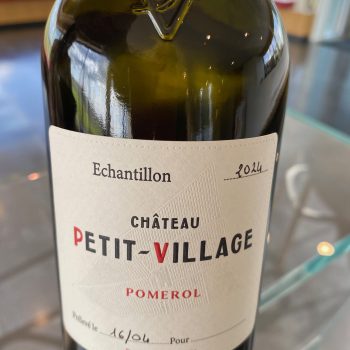 Château Petit-Village
Château Petit-Village (Pomerol; 60% Merlot; 31% Cabernet Franc; 9% Cabernet Sauvignon; from around 4 of the 10.5 hectares, much of which has recently been replanted; a final yield of 20 hl/ha, very similar to La Conseillante and L’Evangile; the average age of the vines is now 57 years; floraison was early and hence difficult and the result was coulure and millerandage; very little mildew loss; the size of the harvesting team was doubled allowing things to be picked when they needed to be, very quickly; pH 3.65; 13% alcohol; certified organic; tasted at the property with Lauren Laudrin and Vincent Priou). This is very beautiful with the low yields achieving a kind of quality selection that raises this to a still higher level in the context of the vintage. Violets and roses, so utterly beautiful, in their pixilated perfection. It’s appropriate in a triangular shaped vineyard to say that this is very close to the top of the qualitative pyramid that forms this vintage. The Cabernet Franc expresses itself so graciously. Very lifted. There’s no need to swirl this, such is the aromatic lift. Blueberry and blueberry compote with a touch of cassis and black cherry. So fine. Cool, soft, ultra-fine grained and utterly beautiful texturally. One sees the potential of the terroir here more than ever and the work that has already been achieved. The cedar in the mid-palate is beautiful too. This is all that I look for in a top plateau Pomerol in its perfectly limpid and crystalline purity and precision. Long and sapid on the finish.
94-96.
Les Pensées de Lafleur (Pomerol; 64% Merlot; 36% Bouchet; high yields of around 40-42 hl/ha; 13.4% alcohol; tasted at the property with Baptiste and Julie Guinaudeau, Omri Ram and Ralitsa Todorieva). Blueberry. Cassis. Bramble. And that intense florality – here more peony, iris and mimosa than violet, again quite all quite bulby (almost with a little earth still attached to the bulbs). Grippy and structured, the considerable tannins mould and shape this over the palate. Very much a vin de garde in a vintage typically for more immediate gratification. Cashmere textured, yet serious and structured. Almost blocky in its tannic structure. If this were a work of art (and it is, in a way) it would have been painted by Braque! Vivid and brilliant and utterly distinctive. Very aerial on the finish, but also ethereal and very, very long.
94-96.
La Petite Église (Pomerol; 90% Merlot; 10% Cabernet Franc; aging in oak barrels, 70% new; 13.5% alcohol; tasted with Noëmie Durantou at L’Eglise Clinet). Seductive, succulent and so redolently of the plateau. This is rich for the vintage with a lovely sense of compactness and density that is so often missing in 2024. That gracious delicate and subtle violet and rose petal florality that one is no used to finding here. Incense, just a touch. And cedar with aeration. A little red berry fruit too – raspberry, especially, and it’s as it each separate berry is captured in pixilated detail. Cool and focussed at the core – like gliding into a moonlit glassy lake but only slightly disturbing the surface. Glassy, glossy, but natural in its purity and precision and crystallinity – the signature of Noemie Durantou’s wines this year – but with a density that is very rare in the vintage. The freshness is very well integrated and distributed over the palate and that gives this a vivacity and energy that is energising and that brings a very tactile sense of engagement with the wine.
92-94.
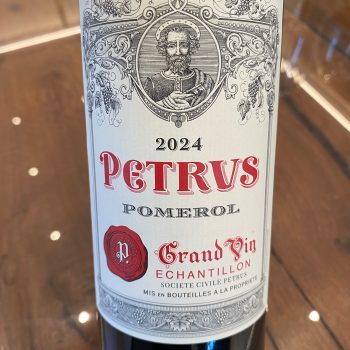 Petrus
Petrus (Pomerol; 100% Merlot; tasted with Olivier Berrouet). Plump dark berry fruits. A little black cherry. A lot of Petrus graphite. Very soft, very round, very sumptuous and almost opulent but with a hint of the slight austerity of the vintage giving this a depth and profundity that really sets it apart. With aeration, the cedar starts to flood through and fill this out further. Walnuts. Walnut oil. And fresh mint. A hint of violet now and even rose petal. A touch of ferrous minerality. Very delicate fine tannins – from the quite thin skins. Ample, naturally sweet, very spherical in form and pushing into the cheeks. I love the classicism and calm tranquillity of this. The tannins are beady and break in through the glassy spherical core to release plumes of additional freshness – but not with the crisp brightness and freshness of Lafleur as this has more of a tranquil and calm authority and stature. Majestic. Magisterial. This has a harmony that is overpowering. So gracious, so complete already and just how you might wish to imagine it to be. Spherical at the core (almost matching the form of the glass in which it is served), with the tannins breaking up the surface just a little, releasing little eddies – tourbillons – of freshness that animate this. They release too a little salinity. One of the most enjoyable wines of the vintage to taste. Utterly beautiful and beguiling and with a grace and charm that is incredible. Not big, but great. Serene.
96-98.
Le Pin (Pomerol; 100% Merlot; a final yield of 29 hl/ha; pH 3.72; 65% new oak; 13% alcohol tasted with Jacques Thienpont from two different samples). Radiantly gorgeous in its aromatics. Very lifted, aerial and vertical – more so than usual – but with the same sense of class and erudition. Eloquent, articulate, poised and gracious. Pencil-shavings and blueberry, red and darker cherries, sloes and damsons. But also, that intense bulby florality than is a signature of the vintage, here with perhaps greater intensity than anywhere else. I find more blueberry notes from a second, fresher, sample, also a little rose petal and wisteria. Heather too. This is so incredibly soft and gently enrobing in the mouth. A wine without an attack – for that’s far too harsh a word. Upright in form in the mouth like an extended lozenge, with the tactile tannins extending the vertical range in a most beautifully soft and gentle way. I utterly adore this. Succulent in its way, but more immediately ethereal than any recent vintage of Le Pin. A coup de Coeur, to which I react with goosepimples. A little hint of bitterness on the finish – with almost a slight delectable burnt sugar note.
96-98+.
Château Plince (Pomerol; 86% Merlot; 14% Cabernet Franc; from a vineyard of 8.7 hectares on a sand over crasse de fer terroir; tasted twice, the second time at JP Moueix in Libourne). Quite glossy in texture and with very fine-grained polished tannins enrobing a reasonably well-packed spherical core. This is nicely done but its lacks delineation and flow over the palate, coming across as a little monotonic, stern even, as a consequence. But it’s fresh, soft and quite sapid. Well made, but one has the sense that nature was not especially kind here.
88-90.
Château Plincette (Pomerol; 100M; from a little property of 1.41ha in the south of the appellation next to the rugby stadium on the outskirts of Libourne). Nicely achieved, with quite a bit of character. Damson and blueberries. Fresh-fruited and lithe, crystalline and pure, fluid and quite ample. Chewy tannins release freshness and sapidity on the finish. No dryness. Long.
87-89.
Château Porte Chic (Pomerol; 70% Merlot; 25% Cabernet Franc; 5% Cabernet Sauvignon; a final yield of 32.2 hl/ha; pH 3.40; 13% alcohol; this comes from a tiny vineyard of around 2 hectares on what used to be the horse racing track very close to the village of Pomerol itself; it was acquired in 2010 and is produced by Jean-Louis Trocard – better known for Clos Dubreuil and Clos de la Vieille Eglise; appropriately enough, it’s named after a race horse – Papillon Porte Chic!). One of Pomerol’s hidden gems. Tasted after its sister wine, Clos de la Vieille Eglise, this is much more red-berry fruited – red cherries, redcurrants and just a little blackcurrant, perhaps a hint of blueberry leaf too. This is fresher still (the pH lower), a little more lifted and it has less density and layering, partly due to its slightly more ample frame. I love the vibrancy of the mid-palate and the crystalline purity that I find there too – and also the darker fruit shades on the finish, more blackcurrant and grape skin.
90-92+.
Château Rouget (Pomerol; 85% Merlot; 15% Cabernet Franc; 30% barrel fermentation, the rest in stainless steel tanks; pH 3.6; 13% alcohol; certified organic; tasted twice, first at the UGC press tasting at the Cité du Vin). Pretty, pleasingly floral and almost Burgundian in its poise, its amplitude and its relaxed, calm and gentle swagger. It’s a little Gevrey-Chambertin-like stylistically, with a natural sweetness quite a sinuous mid-palate. Long and gently tapering this might lack the density, layering and complexity of the very best vintages from here, but it’s a success in the context of this one.
91-93.
Château de Sales (Pomerol; tasted just the once at a négociant tasting). Glossily textured. Polished. Soft, cool and dark fruited at its tight, spherical core. This is very Cabernet in its fruit profile. A wine of lovely freshness, purity and precision, delicate and refined and never pushed or overdone – the product of excellent choices and sensitive winemaking.
91-93.
Château Séraphine (Pomerol; 100% Merlot; 4000 bottles, less than half of the total production here). Smoky, toasty and quite intriguing aromatically with dark berry fruits, cassis and a generous sweet spicing – cinnamon, a touch of nutmeg – all bringing attention and interest. A hint of black tea too. With more aeration there’s a little violet florality and a trace of the cedar that will come through with age. A strict selection preserves the class and integrity of this wine which has a lovely glistening mouthfeel. Tense and increasingly fresh on the lingering finish if a little insubstantial in comparison to recent vintages.
91-93+.
Château Tour Maillet (Pomerol; 100% Merlot; 13.5% alcohol). The oak signature is quite pronounced and this will need more time for everything to come together, but it does help to underline the subtle floral elements. I like too the nutty, walnut shell and walnut oil note that comes through with aeration and supports the strawberry, raspberry and plum fruit. True to its hedonistic Pomerol style in a vintage that makes that more difficult I suspect.
87-89.
Château Trotanoy (Pomerol; 99.5% Merlot; 0.5% Cabernet Franc; tasted at JP Moueix in Libourne). Very elegant. Intensely dark to the core with lots of graphite generously enrobing the black cherry and crushed raspberry and blueberry fruit. There’s a little lilac florality, but it’s more subtle and disguised than in La Fleur-Pétrus and overall, this is a little less expressive for now. It’s deeper and richer in a way on the palate, with more gravitas and profundity, more concentration and density but perhaps at this stage a little less clarity and delineation. This will need time, rather like Certan de May. It’s a little difficult to read at this stage, but it’s definitely very impressive – and as it starts to open in the glass it does start to express more that lush, plump cedar and violet element that makes one’s heart beat faster for Trotanoy. Disguised power, subtle elegance and considerable promise.
95-97.
Clos de la Vieille Eglise (Pomerol; 70% Merlot; 30% Cabernet Franc; from a tiny property of 1.5 hectares on a gravel-clay terroir in the very heart of the appellation; a final yield of 32 hl/ha; pH 3.50; 13% alcohol). A lovely quite expressive aromatic profile of damsons and dark berry fruits – blueberries (from the Cabernet Franc) and mulberries and a little black berry and bramble. There’s a hint of wild thyme and rosemary too and a delicate pink/purple florality – wisteria perhaps, but it’s subtle and difficult to pin down to a simple descriptor. This is lovely too on the attack with the gracious cedar elements (not especially evident aromatically), the blueberries and, now, the violet florality combining beautifully. Quite a narrow frame, good depth and layering. A tad dry on the finish, but lush in the mid-palate, this is wine I rather like in 2024.
91-93.
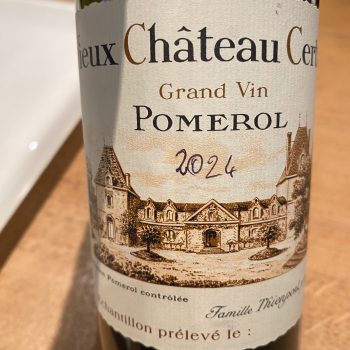 Vieux Château Château
Vieux Château Château (Pomerol; 71% Merlot; 20% Cabernet Franc; 9% Cabernet Sauvignon; a final yield of 30 hl/ha; 13.5% alcohol; tasted with Guillaume and Alexandre Thienpont at the property). Magnifique! Aromatically vertical, like Le Pin but fresher in a way and more direct. Cassis. Blackcurrant, bramble. Graphite and a hint of the cedar to come, more and more as this opens up and inhales. A little fresher in its fruit signature, with redcurrant and a redcurrant leafiness. Mimosa and rose petal. Lovely is form with a narrower frame than in recent vintages, accentuating the sense of crystallinity. This is like a vertically presented cylinder, glassy and crystalline to the middle with up-thrusts of fresh dark berry fruits revivifying the palate. With aeration in the mouth the cedar and cassis interweave like a vine spiralling upwards as it attaches itself to a vertical stake – gorgeously inter-coiled. A great sense of vertical range and hence depth. Yet this feels light and aerial. I love the reappearance of the bulby floral notes on the finish. Long and intensely vinous. More linear than it has been in recent vintages. Serine.
94-96+.
Château La Violette (Pomerol; 100% Merlot; a final yield of 16 hl/ha which, from the 1.26 hectares in production, produces very little, fewer than 3000 bottles; hand de-stemmed and micro-vinified in new oak barrels; 13.5% alcohol; tasted with Henri Parent at Le Gay). Always the product of a labour of love here in a vintage in which all the best wines have been made in that way. This is a vintage in which this wine really expresses its identity. Lifted violet and peony notes, a little lily of the valley too, a touch of very dark chocolate interspersed with the violets. There is also a note of dried rose petals. Damson and bramble. The oak is already well-integrated but brings a definitive touch of spice to this. Very gracious tannins and a lovely sapidity, over a much narrower frame than Le Gay. Altogether more subtle and shimmering in its silky mouthfeel. Very good indeed, above all for a wine that is 100 per cent Merlot in a vintage where this is often very tricky. This shows its class. The élévage will need to be carefully managed, but this has considerable potential and will reward the patient.
93-95.
Château Vray Croix de Gay (Pomerol; 79% Merlot; 21% Cabernet Franc; a final yield of 31 hl/ha; 13.1 alcohol; tasted at Calon-Ségur). Floral, with a vivid violet character. Cedar. Dark berries. This is all rather beautiful. The oak is more moderate than it used to be and I find this more and more plummy as it opens. Supple. This has quite a narrow frame and maybe lacks a bit of density but it’s impressively pure and crystalline.
91-93.
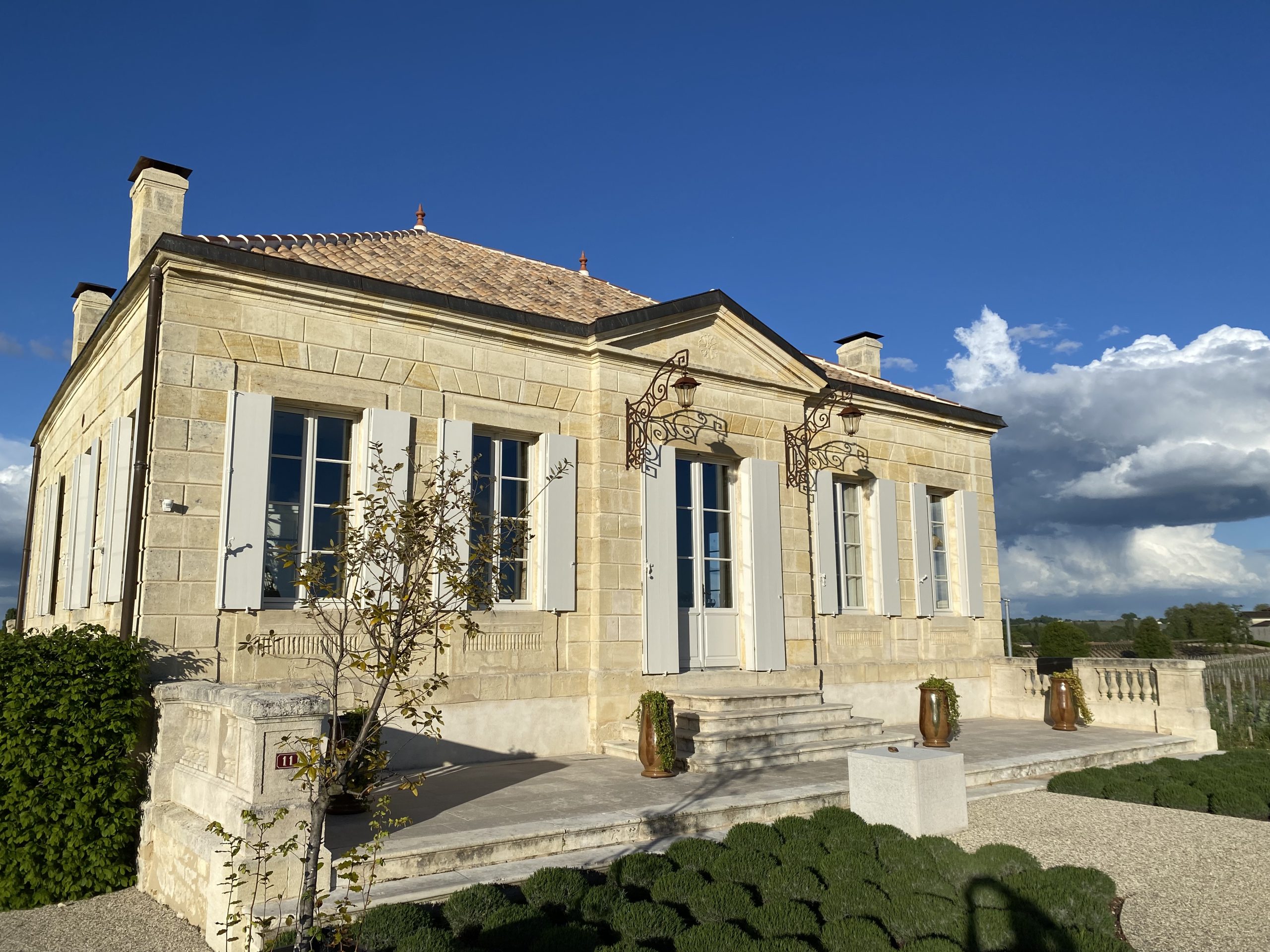

 Château La Conseillante (Pomerol; 80% Merlot; 20% Cabernet Franc; a final yield of just 22 hl/ha due to the losses arising from coulure and millerandage associated with the slow and long floraison after an early débourrement and difficult pollination requiring for the first time densimetic sorting calibrated at 12.5% alcohol, with 20% of what was harvested rejected; there was no significant problem with mildew; pH 3.57; 9% vin de presse; aged in oak barrels, 70% new; 13.5% alcohol; tasted at La Conseillante with Marielle Cazaux). Fabulous aromatics. Violet and the parfumier’s essence of violet. Incense too. Rose petals and, again, their parfumier’s essence. Black cherry and confit blueberries. A little hint of the cedar to come and a trace of graphite (if graphite comes in traces). Super-svelte on the attack, with ultra-fine grained and gracious tannins, the first inhalation of air bringing the violets back into the core of the dark berry and stone fruits. Compact and nicely concentrated. Supple and limpid over quite an ample frame. Very classical but also even more intensely floral than ever. The tannins stay just – but only just – the right side of dry which is my only slight qualm. Serene. This has been expertly managed and is very beautiful whilst remaining entirely true to the style of both the vintage and La Conseillante. Excellent. 94-96.
Château La Croix (Pomerol; 60% Merlot; 20% Cabernet Franc; 20% Cabernet Sauvignon; from Joseph Janoueix’s vineyard of 10 hectares in Catusseau between Beauregard and Nénin in the heart of the appellation on a gravel terroir). Very classical in a way, and a success in the context of the vintage. A lovely quite expressive nose of wildflowers, wild herbs and dark berry fruits, blackcurrant and bramble. This feels pleasingly ripe, and the mid-palate actually builds as the wine inhales. The finish is clean, precise, quite aerial and with no dryness. Simple but very well made and very expressive of its terroir and appellation. 90-92.
Château La Croix du Casse (Pomerol; 95% Merlot; 5% Cabernet Franc; 14% alcohol; tasted at Batailley with Frédéric Castéja). Iron-rich in its crasse de fer minerality. Quite sweet-fruited, with dark plums and assorted red berries. I find this very direct, honest and authentic. There’s a lovely freshness too, that vivifies the mid-palate just when one is looking for a little further interest. Just a slight hint of residual sugar. 89-91.
Château Croix de Gay (Pomerol; 97.5% Merlot; 2.5% Cabernet Franc; a final yield of 34 hl/ha; 12.5% alcohol; tasted twice, first at the UGC press tasting at the Cité du Vin). Ferrous in its minerality, as ever – very crasse de fer! A little oyster shell and iodine and then, too, a distinct hint of horsehair and straw. Very distinctive. Quite ample on the attack and that gives the fruits the space to glide and dance, rendering this more crystalline that in vintages with more density. You have to like the mineral signature of the terroir here, but this is very well made. 90-92.
Château La Croix Saint-Georges (Pomerol; 100% Merlot; from Jean-Philippe Jonoueix; tasted just the once at a négociant tasting). There’s a certain new temperance here! A lovely intense damson, Griotte cherry and blueberry fruit, very pure, fine and precise – indeed, in almost pixilated detail. I prefer this to the 2023. It’s very direct, authentic and expressive, finely layered too. I like the eloquent crystallinity of the fruit as it flows over the plate very much. The only slight downside is the hint of dryness on the finish. But there is no mistaking the elegance of this, the oak much more moderated than it used to be. 91-93+.
Château La Croix Toulifaut (Pomerol; 85% Merlot; 15% Cabernet Franc; a tiny property of 1.9 hectares contiguous with the much larger La Croix estate; from Joseph Janoueix; now certified organic). I have very fond memories of the 1998 (reinforced by the image of the wonderful etching on the label) and I rather like this too. It’s richer and deeper than La Croix, with less dark berry fruits and more plummy notes – damsons and a little crushed blueberry. It’s more creamy in texture and it has a pleasing viscosity, suggesting ripe fruit and little or no chaptalisation. Long and gently tapering on the finish, there’s lot to like here even if it’s far from the most complex of wines. 90-92+.
Domaine de L’Eglise (Pomerol; 98% Merlot; 2% Cabernet Franc; 14% alcohol; tasted at Batailley with Frédéric Castéja). Dark plummy fruits – damsons, a little black cherry and some blueberry and mulberry too. Walnut oil and a lovely hint of violet and a touch of cedar. Chewy on the finish. Nicely done but perhaps missing a little density in the mid-palate. 90-92.
Château La Conseillante (Pomerol; 80% Merlot; 20% Cabernet Franc; a final yield of just 22 hl/ha due to the losses arising from coulure and millerandage associated with the slow and long floraison after an early débourrement and difficult pollination requiring for the first time densimetic sorting calibrated at 12.5% alcohol, with 20% of what was harvested rejected; there was no significant problem with mildew; pH 3.57; 9% vin de presse; aged in oak barrels, 70% new; 13.5% alcohol; tasted at La Conseillante with Marielle Cazaux). Fabulous aromatics. Violet and the parfumier’s essence of violet. Incense too. Rose petals and, again, their parfumier’s essence. Black cherry and confit blueberries. A little hint of the cedar to come and a trace of graphite (if graphite comes in traces). Super-svelte on the attack, with ultra-fine grained and gracious tannins, the first inhalation of air bringing the violets back into the core of the dark berry and stone fruits. Compact and nicely concentrated. Supple and limpid over quite an ample frame. Very classical but also even more intensely floral than ever. The tannins stay just – but only just – the right side of dry which is my only slight qualm. Serene. This has been expertly managed and is very beautiful whilst remaining entirely true to the style of both the vintage and La Conseillante. Excellent. 94-96.
Château La Croix (Pomerol; 60% Merlot; 20% Cabernet Franc; 20% Cabernet Sauvignon; from Joseph Janoueix’s vineyard of 10 hectares in Catusseau between Beauregard and Nénin in the heart of the appellation on a gravel terroir). Very classical in a way, and a success in the context of the vintage. A lovely quite expressive nose of wildflowers, wild herbs and dark berry fruits, blackcurrant and bramble. This feels pleasingly ripe, and the mid-palate actually builds as the wine inhales. The finish is clean, precise, quite aerial and with no dryness. Simple but very well made and very expressive of its terroir and appellation. 90-92.
Château La Croix du Casse (Pomerol; 95% Merlot; 5% Cabernet Franc; 14% alcohol; tasted at Batailley with Frédéric Castéja). Iron-rich in its crasse de fer minerality. Quite sweet-fruited, with dark plums and assorted red berries. I find this very direct, honest and authentic. There’s a lovely freshness too, that vivifies the mid-palate just when one is looking for a little further interest. Just a slight hint of residual sugar. 89-91.
Château Croix de Gay (Pomerol; 97.5% Merlot; 2.5% Cabernet Franc; a final yield of 34 hl/ha; 12.5% alcohol; tasted twice, first at the UGC press tasting at the Cité du Vin). Ferrous in its minerality, as ever – very crasse de fer! A little oyster shell and iodine and then, too, a distinct hint of horsehair and straw. Very distinctive. Quite ample on the attack and that gives the fruits the space to glide and dance, rendering this more crystalline that in vintages with more density. You have to like the mineral signature of the terroir here, but this is very well made. 90-92.
Château La Croix Saint-Georges (Pomerol; 100% Merlot; from Jean-Philippe Jonoueix; tasted just the once at a négociant tasting). There’s a certain new temperance here! A lovely intense damson, Griotte cherry and blueberry fruit, very pure, fine and precise – indeed, in almost pixilated detail. I prefer this to the 2023. It’s very direct, authentic and expressive, finely layered too. I like the eloquent crystallinity of the fruit as it flows over the plate very much. The only slight downside is the hint of dryness on the finish. But there is no mistaking the elegance of this, the oak much more moderated than it used to be. 91-93+.
Château La Croix Toulifaut (Pomerol; 85% Merlot; 15% Cabernet Franc; a tiny property of 1.9 hectares contiguous with the much larger La Croix estate; from Joseph Janoueix; now certified organic). I have very fond memories of the 1998 (reinforced by the image of the wonderful etching on the label) and I rather like this too. It’s richer and deeper than La Croix, with less dark berry fruits and more plummy notes – damsons and a little crushed blueberry. It’s more creamy in texture and it has a pleasing viscosity, suggesting ripe fruit and little or no chaptalisation. Long and gently tapering on the finish, there’s lot to like here even if it’s far from the most complex of wines. 90-92+.
Domaine de L’Eglise (Pomerol; 98% Merlot; 2% Cabernet Franc; 14% alcohol; tasted at Batailley with Frédéric Castéja). Dark plummy fruits – damsons, a little black cherry and some blueberry and mulberry too. Walnut oil and a lovely hint of violet and a touch of cedar. Chewy on the finish. Nicely done but perhaps missing a little density in the mid-palate. 90-92.
 Château L’Église Clinet (Pomerol; 90% Merlot; 10% Cabernet Franc; aging in oak barrels, 85% of them new; 13.8% alcohol; tasted with Noëmie Durantou at L’Eglise Clinet). A brilliant achievement from Noëmie Durantou and Olivier Gautrat. If anyone was going to rise to the multiple challenges of this vintage it was going to be them. They have. Initially introvert and subtle. It demands calm respect, and you have to come to it. A little spiritual in a way. It’s refined and very beautiful, with a delicate and beguiling florality – incense (as in La Petite Eglise), but just a little more here, violets, rose petals and peony, all very fresh. Black cherries, blueberries, mulberries and black berries, again as if painted in pixilated detail. Graphite and cedar enrobe the fruit but also allow it the space it needs. There’s a slight hint of wild freshly picked herbs and even a touch of heather. Texturally sublime. Incredibly soft on the entry, but that softness comes as even more of a surprise because of the intensity, density and compactness of the mid-palate. Spherical at the core, with pixilating tannins that help one focus in on and pick out the details from the dense cylindrical core of the palate. As it opens, however, it’s as if one starts to pick out the velvet layers and that changes a little the impression of the form and structure of the wine, rendering it both more ample and accentuating the sense of depth and profundity. A wine that transcends the vintage. Unique and rather different in its identity than the other superstars of the Pomerol plateau; it’s actually more like Petrus than anything else (but the Cabernet Franc really speaks here too). Gracious and ethereal yet serious, intellectual and in great harmony with the vintage. 95-97+.
Château L’Enclos (Pomerol; 88% Merlot; 10% Cabernet Franc; 2% Malbec; certified organic and in conversion to biodynamic, this is the sister property of the rising star that is Fonplégade in St Emilion; situated on the western slope of the Pomerol plateau; aged in oak barrels, 30% of which are new; 13% alcohol). Immediately enticing aromatically, with a natural sweetness to the plump, ripe, red berry fruits. There’s a brightness and a lift and energy to this that seems to convey the health of the vineyard. Focussed, precise and very pure with an almost glassy, crystalline texture. Some will crave more flesh and viscosity, but I rather like this refined, elegant yet vivid and fruit-forward style. 90-92+.
Enclos Tourmaline (Pomerol; just 1.2 hectares on blue clay and gravel close to Le Pin; 96% Merlot; 4% Cabernet Franc; a final yield of 30 hl/ha; pH 3.45; 100% vinification intégrale in new oak; 13.5% alcohol; tasted at Bellefont-Belcier with Emmanuelle Fulchi and Jean-Christophe Meyrou). Interesting. Quite nutty at first, with even a hint of salted peanut brittle! Red cherries, blueberries and mulberries. Ultra-pure with a lovely mouthfeel. Very soft but at the same time tactile, with transparent layering achieving a kind of glossy glassy-ness. Brilliant in its freshness and éclat. Elegant, enticing, energetic and very impressive. Classy, sleek and super-stylish. 93-95.
Château de l’Evangile (Pomerol; 80% Merlot; 19% Cabernet Franc; 1% Cabernet Sauvignon; a final yield of 21 hl/ha; 13.5% alcohol; tasted at the property with Juliette Couderc). A little closed for now. Puissant, bold, round and rich. Serious in the context of the vintage but not in terms of austerity, just in terms of amplitude and range and depth and profundity. Black cherries form the core of this but within that core we have lovely more lifted notes of black currant and bramble. With aeration lovely cassis too. I find this very ‘plateau Pomerol’ in its ripeness. Nutty, as ever. Powerful but refined, with that dusting of salinity that one finds in Blason too. Sapid and with an added sense of energy that seems to come from the organic viticulture. 92-94.
Château Fayat (Pomerol; 85% Merlot; 15% Cabernet Franc; from around 40 different parcels on a variety of terroirs, amounting to around 12.7 hectares; a final yield of 39hl/ha; pH 3.65; 14.5% alcohol). There has been a lot of excellent work going on here in recent vintages and I hope this property will soon start to acquire the attention it merits. It is a sister estate to La Dominique in St Emilion and there are evident similarities in both the style and the steep upward trajectory. This feels like the vintage in which it all comes together. The intensity of the violet florality really wows, as does the beautiful blueberry fruit signature. And there’s cedar too. The tannins are ultra-refined and glossy, and this is long and balanced. Possibly the best I’ve ever tasted from here and to achieve that in the context of this vintage is special indeed. 92-94.
Château Feytit-Clinet (Pomerol; 88% Merlot; 12% Cabernet Franc; from a well-situated vineyard just down the hill from Clinet and Eglise-Clinet and opposite Latour à Pomerol; a final yield of 33 hl/ha; pH 3.70; 13.5% alcohol; tasted twice, first from a sample sent to me in Bordeaux). Initially quite oaky at this early stage but with a deeply impressive core of intense crushed dark berry and stone fruits – blueberries and black cherries – and, as it opens, the oak seems to be replaced by the violets. Beautiful. I liked the 2023 very much and I love this too. It’s one of the sweeter wines in and through the mid-palate which makes it seem like a bit of a vintage outlier, but those confit floral elements are very true to Pomerol, and, in a way, this seems to transcend the challenges of the vintage. 92-94.
Château La Fleur de Gay (Pomerol; 88.5% Merlot; 11.5% Cabernet Franc; 13% alcohol; tasted just once at the offices of a Bordeaux négociant). Violets. Blueberries. Griotte cherries. A little sweet spice from the oak and a little iron minerality – the crasse de fer perhaps a little more demonstrative than it usually is. Precise, focused and quite limpid. There’s not quite the sparkle and vivacity in the mid-palate of 2020 or 2022 but I like the choices made here. 91-93.
Château La Fleur-Pétrus (Pomerol; 99.5% Merlot; 0.5% Petit Verdot; tasted at JP Moueix in Libourne). There is no Hosanna this year, nor Lagrange à Pomerol nor La Grave. But this is beguiling and beautiful with a very pure lilac and violet floral aromatic profile enrobing the dark berry and damson fruit. Cedar and a little graphite with aeration. Plump, plush, succulent and very gracious in its limpid, sinuous evolution over the palate. Cool and crystalline. Sapid and saline on the finish. Truly gorgeous and capturing the subtle beauty and elegance of plateau Pomerol at its best. 94-96.
Fugue de Nénin (Pomerol; 97% Merlot; 3% Cabernet Franc; a final yield of 35 hl/ha; 9.2% vin de presse; IPT 51; pH 3.60; 13% alcohol; tasted at Nénin). Bright, intensely dark berry fruit. Simple but very nicely done. Quite plump and lush on the attack, but then the acidity kicks in a little and it comes as a slight shock, but thereafter the wine recovers its form. The tannins are incredibly soft, and this is excellent at its level when set in the context of the vintage. 87-89.
Château L’Église Clinet (Pomerol; 90% Merlot; 10% Cabernet Franc; aging in oak barrels, 85% of them new; 13.8% alcohol; tasted with Noëmie Durantou at L’Eglise Clinet). A brilliant achievement from Noëmie Durantou and Olivier Gautrat. If anyone was going to rise to the multiple challenges of this vintage it was going to be them. They have. Initially introvert and subtle. It demands calm respect, and you have to come to it. A little spiritual in a way. It’s refined and very beautiful, with a delicate and beguiling florality – incense (as in La Petite Eglise), but just a little more here, violets, rose petals and peony, all very fresh. Black cherries, blueberries, mulberries and black berries, again as if painted in pixilated detail. Graphite and cedar enrobe the fruit but also allow it the space it needs. There’s a slight hint of wild freshly picked herbs and even a touch of heather. Texturally sublime. Incredibly soft on the entry, but that softness comes as even more of a surprise because of the intensity, density and compactness of the mid-palate. Spherical at the core, with pixilating tannins that help one focus in on and pick out the details from the dense cylindrical core of the palate. As it opens, however, it’s as if one starts to pick out the velvet layers and that changes a little the impression of the form and structure of the wine, rendering it both more ample and accentuating the sense of depth and profundity. A wine that transcends the vintage. Unique and rather different in its identity than the other superstars of the Pomerol plateau; it’s actually more like Petrus than anything else (but the Cabernet Franc really speaks here too). Gracious and ethereal yet serious, intellectual and in great harmony with the vintage. 95-97+.
Château L’Enclos (Pomerol; 88% Merlot; 10% Cabernet Franc; 2% Malbec; certified organic and in conversion to biodynamic, this is the sister property of the rising star that is Fonplégade in St Emilion; situated on the western slope of the Pomerol plateau; aged in oak barrels, 30% of which are new; 13% alcohol). Immediately enticing aromatically, with a natural sweetness to the plump, ripe, red berry fruits. There’s a brightness and a lift and energy to this that seems to convey the health of the vineyard. Focussed, precise and very pure with an almost glassy, crystalline texture. Some will crave more flesh and viscosity, but I rather like this refined, elegant yet vivid and fruit-forward style. 90-92+.
Enclos Tourmaline (Pomerol; just 1.2 hectares on blue clay and gravel close to Le Pin; 96% Merlot; 4% Cabernet Franc; a final yield of 30 hl/ha; pH 3.45; 100% vinification intégrale in new oak; 13.5% alcohol; tasted at Bellefont-Belcier with Emmanuelle Fulchi and Jean-Christophe Meyrou). Interesting. Quite nutty at first, with even a hint of salted peanut brittle! Red cherries, blueberries and mulberries. Ultra-pure with a lovely mouthfeel. Very soft but at the same time tactile, with transparent layering achieving a kind of glossy glassy-ness. Brilliant in its freshness and éclat. Elegant, enticing, energetic and very impressive. Classy, sleek and super-stylish. 93-95.
Château de l’Evangile (Pomerol; 80% Merlot; 19% Cabernet Franc; 1% Cabernet Sauvignon; a final yield of 21 hl/ha; 13.5% alcohol; tasted at the property with Juliette Couderc). A little closed for now. Puissant, bold, round and rich. Serious in the context of the vintage but not in terms of austerity, just in terms of amplitude and range and depth and profundity. Black cherries form the core of this but within that core we have lovely more lifted notes of black currant and bramble. With aeration lovely cassis too. I find this very ‘plateau Pomerol’ in its ripeness. Nutty, as ever. Powerful but refined, with that dusting of salinity that one finds in Blason too. Sapid and with an added sense of energy that seems to come from the organic viticulture. 92-94.
Château Fayat (Pomerol; 85% Merlot; 15% Cabernet Franc; from around 40 different parcels on a variety of terroirs, amounting to around 12.7 hectares; a final yield of 39hl/ha; pH 3.65; 14.5% alcohol). There has been a lot of excellent work going on here in recent vintages and I hope this property will soon start to acquire the attention it merits. It is a sister estate to La Dominique in St Emilion and there are evident similarities in both the style and the steep upward trajectory. This feels like the vintage in which it all comes together. The intensity of the violet florality really wows, as does the beautiful blueberry fruit signature. And there’s cedar too. The tannins are ultra-refined and glossy, and this is long and balanced. Possibly the best I’ve ever tasted from here and to achieve that in the context of this vintage is special indeed. 92-94.
Château Feytit-Clinet (Pomerol; 88% Merlot; 12% Cabernet Franc; from a well-situated vineyard just down the hill from Clinet and Eglise-Clinet and opposite Latour à Pomerol; a final yield of 33 hl/ha; pH 3.70; 13.5% alcohol; tasted twice, first from a sample sent to me in Bordeaux). Initially quite oaky at this early stage but with a deeply impressive core of intense crushed dark berry and stone fruits – blueberries and black cherries – and, as it opens, the oak seems to be replaced by the violets. Beautiful. I liked the 2023 very much and I love this too. It’s one of the sweeter wines in and through the mid-palate which makes it seem like a bit of a vintage outlier, but those confit floral elements are very true to Pomerol, and, in a way, this seems to transcend the challenges of the vintage. 92-94.
Château La Fleur de Gay (Pomerol; 88.5% Merlot; 11.5% Cabernet Franc; 13% alcohol; tasted just once at the offices of a Bordeaux négociant). Violets. Blueberries. Griotte cherries. A little sweet spice from the oak and a little iron minerality – the crasse de fer perhaps a little more demonstrative than it usually is. Precise, focused and quite limpid. There’s not quite the sparkle and vivacity in the mid-palate of 2020 or 2022 but I like the choices made here. 91-93.
Château La Fleur-Pétrus (Pomerol; 99.5% Merlot; 0.5% Petit Verdot; tasted at JP Moueix in Libourne). There is no Hosanna this year, nor Lagrange à Pomerol nor La Grave. But this is beguiling and beautiful with a very pure lilac and violet floral aromatic profile enrobing the dark berry and damson fruit. Cedar and a little graphite with aeration. Plump, plush, succulent and very gracious in its limpid, sinuous evolution over the palate. Cool and crystalline. Sapid and saline on the finish. Truly gorgeous and capturing the subtle beauty and elegance of plateau Pomerol at its best. 94-96.
Fugue de Nénin (Pomerol; 97% Merlot; 3% Cabernet Franc; a final yield of 35 hl/ha; 9.2% vin de presse; IPT 51; pH 3.60; 13% alcohol; tasted at Nénin). Bright, intensely dark berry fruit. Simple but very nicely done. Quite plump and lush on the attack, but then the acidity kicks in a little and it comes as a slight shock, but thereafter the wine recovers its form. The tannins are incredibly soft, and this is excellent at its level when set in the context of the vintage. 87-89.
 Château Le Gay (Pomerol; 81% Merlot; 19% Cabernet Franc; a final yield of 18.4 hl/ha from the 10.4 hectares in production; 13.5% alcohol; tasted twice, first at the UGC press tasting at the Cité du Vin and then with Henri Parent at the property). Plump, plush, densely charged and packed with cherry and dark berry fruits, with the Cabernet Franc more present when re-tasted at the property. A little lilac too. Dried flowers and pot pourri. Leather and tabac. Frangipane and toasted almonds. This is big, bold and distinctive in the context of the vintage. The careful management of the extraction has allowed much more volume in the mouth and viscosity than in almost all wines of the appellation in the vintage, but without any astringency or dryness which is impressive indeed. Chunky, which is not a descriptor I’ve yet used in this vintage! But it is also sapid and refreshing on the finish, with a menthol life right at the end. 92-94.
Château Gazin (Pomerol; 90% Merlot; 10% Cabernet Sauvignon; a final yield of 23.4 hl/ha; 13.5% alcohol; tasted twice, first at the UGC press tasting at the Cité du Vin). I come to this with a certain sense of anticipation, as it’s a wine that seems to be in the process of changing its style and identity. In fact, here I find it very true to its terroir – a nice balance between the past and the present. It’s certainly more restrained, elegant and balanced than it was, more floral and refined and the accent on the ferrous minerality of old is replaced here with an accent on floral notes – violet and rosewater. The fruit is succulent and juicy and there’s impressive density but without losing the fluidity and sinuousness of the vintage. Pure, precise and crystalline, this is very impressive. It’s on the verge of losing its shape just before the finish, but the pinch of the tannins, the release of juicy freshness that follows gathers this back up into a lovely plume that gives this added length. Nicely managed. 92-94.
Château Guillot-Clauzel (Pomerol; 80% Merlot; 20% Cabernet Franc; a final yield of 30 hl/ha; 33% new oak; 13.5% alcohol). This has lovely gravel terroir notes, like its neighbour Le Pin in a way, but with the lift and freshness and directness of Vieux Château Certan! Very pretty aromatically. Fleurs de vigne. A more bulby floral note too – peony and wisteria. This is a little more red berry fruited than VCC. It’s also more crunchy (croquant) and has great authority and purity. Red cherries and cherry blossom. Wild strawberry. A little blueberry. On the palate this it vertical, tense and taut from the start but with more softness and gravitas lower down the palate where the tannins, a little like Le Pin gather up the fruit, drawing it towards the bottom of the palate. Really special and very close to the level of VCC, if with a slightly different fruit profile. Purity, precision and finesse. 94-96.
L’Innocence de Séraphine (Pomerol; 65% Merlot; 35% Cabernet Franc; 13.3% alcohol; just 4500 bottles and a little over half of the total production of this 2.2 hectare estate). Sweet-fruited aromatically, with a subtle hint of vanilla pod and sweet spices dusting the dark berries and the red and darker stone fruits. A hint of cedar, but really just a suggestion. This is fine, but it lacks both the complexity and the mid-palate delineation of the grand vin. When you taste the two together you understand (and respect) the choices made. 87-89.
Château Le Gay (Pomerol; 81% Merlot; 19% Cabernet Franc; a final yield of 18.4 hl/ha from the 10.4 hectares in production; 13.5% alcohol; tasted twice, first at the UGC press tasting at the Cité du Vin and then with Henri Parent at the property). Plump, plush, densely charged and packed with cherry and dark berry fruits, with the Cabernet Franc more present when re-tasted at the property. A little lilac too. Dried flowers and pot pourri. Leather and tabac. Frangipane and toasted almonds. This is big, bold and distinctive in the context of the vintage. The careful management of the extraction has allowed much more volume in the mouth and viscosity than in almost all wines of the appellation in the vintage, but without any astringency or dryness which is impressive indeed. Chunky, which is not a descriptor I’ve yet used in this vintage! But it is also sapid and refreshing on the finish, with a menthol life right at the end. 92-94.
Château Gazin (Pomerol; 90% Merlot; 10% Cabernet Sauvignon; a final yield of 23.4 hl/ha; 13.5% alcohol; tasted twice, first at the UGC press tasting at the Cité du Vin). I come to this with a certain sense of anticipation, as it’s a wine that seems to be in the process of changing its style and identity. In fact, here I find it very true to its terroir – a nice balance between the past and the present. It’s certainly more restrained, elegant and balanced than it was, more floral and refined and the accent on the ferrous minerality of old is replaced here with an accent on floral notes – violet and rosewater. The fruit is succulent and juicy and there’s impressive density but without losing the fluidity and sinuousness of the vintage. Pure, precise and crystalline, this is very impressive. It’s on the verge of losing its shape just before the finish, but the pinch of the tannins, the release of juicy freshness that follows gathers this back up into a lovely plume that gives this added length. Nicely managed. 92-94.
Château Guillot-Clauzel (Pomerol; 80% Merlot; 20% Cabernet Franc; a final yield of 30 hl/ha; 33% new oak; 13.5% alcohol). This has lovely gravel terroir notes, like its neighbour Le Pin in a way, but with the lift and freshness and directness of Vieux Château Certan! Very pretty aromatically. Fleurs de vigne. A more bulby floral note too – peony and wisteria. This is a little more red berry fruited than VCC. It’s also more crunchy (croquant) and has great authority and purity. Red cherries and cherry blossom. Wild strawberry. A little blueberry. On the palate this it vertical, tense and taut from the start but with more softness and gravitas lower down the palate where the tannins, a little like Le Pin gather up the fruit, drawing it towards the bottom of the palate. Really special and very close to the level of VCC, if with a slightly different fruit profile. Purity, precision and finesse. 94-96.
L’Innocence de Séraphine (Pomerol; 65% Merlot; 35% Cabernet Franc; 13.3% alcohol; just 4500 bottles and a little over half of the total production of this 2.2 hectare estate). Sweet-fruited aromatically, with a subtle hint of vanilla pod and sweet spices dusting the dark berries and the red and darker stone fruits. A hint of cedar, but really just a suggestion. This is fine, but it lacks both the complexity and the mid-palate delineation of the grand vin. When you taste the two together you understand (and respect) the choices made. 87-89.
 Château Lafleur (Pomerol; 45M; 55B; high yields of around 40-42 hl/ha; 13.4% alcohol naturally; tasted at the property with Baptiste and Julie Guinaudeau, Omri Ram and Ralitsa Todorieva). The task here according to Baptiste Guinaudeau and Omri Ram was to provide a buffer between the weather conditions and the vines, absorbing the meteorological shocks of the growing season to produce as normal a vineyard cycle as possible to aid ripening. It’s the vineyard equivalent of Keynesianism – counter-cyclical vineyard management! Accepting the early start and, in this case also, longer growing season was also crucial (with February, in effect, now viewed as the first month of Spring). The story here is one of rapid adaptation to unprecedented circumstances – such as the earliest mildew pressure ever and root asphyxiation in the second half of April, necessitating the opening of the soil to encourage the vines to resume growth in preparation for what would otherwise have been a very difficult floraison. The results are spectacular. This is vintage transcendent and utterly gorgeous aromatically. Opulent in its florality, this is a wine of staggering depth and concentration. Red and black cherry, cassis and blackcurrant, bramble, blueberry. Blood orange. That generous and radiant florality – both petals (rose, violet and mimosa) and bulb (iris and peony). Sublime aromatically, ever more so with aeration, this is a wine that grows and grows – and then grows some more – in the glass. So generously sweet and complex in its fruit profile. More and more cherry notes come through building a very natural tension with the fresher darker berry fruits that establish themselves first. A wine with incredible concentration and impact on the palate and a glorious succulence and a natural sweetness too. For Lafleur at this stage I find it wondrously vivid, especially when the tannins engage, breaking the surface of the compact spherical core and releasing little fountains and springs of freshness. On the finish the vibrant sapidity and inherent juiciness form itself into waves, lapping on the shore, seemingly for ever … 96-98+.
Château Lafleur-Gazin (Pomerol; 100% Merlot; tasted at JP Moueix in Libourne). The point (each year there is one) in the Moueix line-up where we step up a notch in our climb towards the summit. A lovely combination of violet florality and creamy fresh plump blueberries, with a little hint of cedar. Very little of the briny ferrous minerality than can destabilise this wine in its youth. Glossy, polished, with quite a slender frame, this is a rather succulent and very juicy and enticing Pomerol that I really like in this vintage. 90-92+.
Château Latour à Pomerol (Pomerol; 100% Merlot; tasted at JP Moueix in Libourne). Expressive and quite lifted aromatically, with a gracious red and darker berry fruit and a little damson. Cedar and a delicate waft of violet remind us of where we are and the violets build and build with gentle aeration – and as they do so they are accompanied, more and more, by a similarly gentle rose petal note. All rather beautiful. Gracious and soft on the attack with quite an ample frame, this is excellent. It lacks the precision and detail in the mid-palate of the very best vintages here, but the mouthfeel is luxuriantly succulent and there’s a pleasing juiciness on the finish. 91-93+.
Château Maillet (Pomerol). A bit of a bell-weather wine for me and I like its plump black cherry, blueberry and blueberry fruit profile very much. I like too the hint of peony and the cedar that comes through with more aeration. There’s quite a lot of substance to this which means that the fruit density covers the oak well – it can be a little less subtle here. A shade towards the dry side on the finish but this has, overall, been very well managed and will make for one of the more hedonistic wines of the vintage. 90-92+.
Château Monregard La Croix (Pomerol; 100% Merlot; a final yield of 36 hl/ha; 30% new oak; 12.8% alcohol with no chaptalisation; tasted twice, first with Jean-Baptiste Bourotte at Clos du Clocher). Blue and purple fruits. Energetic, broad framed and juicy. Layered. Soft and sweet-fruited, fresh and delicious. A lifted plume on the finish with a lovely touch of liquorice. Simple but very well achieved technically and with a pleasing ripeness to it. 90-92.
Château Montviel (Pomerol; 92% Merlot; 8% Cabernet Franc; a final yield of 20 hl/ha; 13.5% alcohol). There’s a pleasing violet and lilac florality to this. Blueberries and brambles, plump and nicely ripe. Quite limpid and crystalline, this is very much a success in the context of the vintage even if the acidity gathers towards the finish. But then the grip and bite of the tannins releases a wave of juicy freshness that clears that away and gives this an impressive length. 90-92.
Château Nénin (Pomerol; 54% Merlot; 38% Cabernet Franc; 8% Cabernet Sauvignon; a final yield of 35 hl/ha; 5.3% vin de presse; IPT 60; pH 3.64; 13% alcohol; tasted at the property). Fine. Light, lifted and aerial with a pure black berry and bramble fruit. A sprig or two of wild herbs and even a little note of underbrush, rare in the vintage. This is precise, quite linear but lacks a little interest in the mid-palate. It’s texturally very refined, however, with such soft and fine-grained tannins. Never dilute, but one craves just a little more substance. Slowly tapering on the finish. 89-91.
Château La Patache (Pomerol; 90% Merlot; 10% Cabernet Franc; a final yield of 21 hl/ha; pH 3.6; 13% alcohol; tasted at Bellefont-Belcier with Emmanuelle Fulchi and Jean-Christophe Meyrou). Quite an interesting and distinct minerality – a little crasse de fer and quite saline too. Pure, precise, fruit-forward, easy in a way but the clarity and fine-grained character of the tannins are very evident and they give this a certain swagger and sense of class. 88-90.
Château Lafleur (Pomerol; 45M; 55B; high yields of around 40-42 hl/ha; 13.4% alcohol naturally; tasted at the property with Baptiste and Julie Guinaudeau, Omri Ram and Ralitsa Todorieva). The task here according to Baptiste Guinaudeau and Omri Ram was to provide a buffer between the weather conditions and the vines, absorbing the meteorological shocks of the growing season to produce as normal a vineyard cycle as possible to aid ripening. It’s the vineyard equivalent of Keynesianism – counter-cyclical vineyard management! Accepting the early start and, in this case also, longer growing season was also crucial (with February, in effect, now viewed as the first month of Spring). The story here is one of rapid adaptation to unprecedented circumstances – such as the earliest mildew pressure ever and root asphyxiation in the second half of April, necessitating the opening of the soil to encourage the vines to resume growth in preparation for what would otherwise have been a very difficult floraison. The results are spectacular. This is vintage transcendent and utterly gorgeous aromatically. Opulent in its florality, this is a wine of staggering depth and concentration. Red and black cherry, cassis and blackcurrant, bramble, blueberry. Blood orange. That generous and radiant florality – both petals (rose, violet and mimosa) and bulb (iris and peony). Sublime aromatically, ever more so with aeration, this is a wine that grows and grows – and then grows some more – in the glass. So generously sweet and complex in its fruit profile. More and more cherry notes come through building a very natural tension with the fresher darker berry fruits that establish themselves first. A wine with incredible concentration and impact on the palate and a glorious succulence and a natural sweetness too. For Lafleur at this stage I find it wondrously vivid, especially when the tannins engage, breaking the surface of the compact spherical core and releasing little fountains and springs of freshness. On the finish the vibrant sapidity and inherent juiciness form itself into waves, lapping on the shore, seemingly for ever … 96-98+.
Château Lafleur-Gazin (Pomerol; 100% Merlot; tasted at JP Moueix in Libourne). The point (each year there is one) in the Moueix line-up where we step up a notch in our climb towards the summit. A lovely combination of violet florality and creamy fresh plump blueberries, with a little hint of cedar. Very little of the briny ferrous minerality than can destabilise this wine in its youth. Glossy, polished, with quite a slender frame, this is a rather succulent and very juicy and enticing Pomerol that I really like in this vintage. 90-92+.
Château Latour à Pomerol (Pomerol; 100% Merlot; tasted at JP Moueix in Libourne). Expressive and quite lifted aromatically, with a gracious red and darker berry fruit and a little damson. Cedar and a delicate waft of violet remind us of where we are and the violets build and build with gentle aeration – and as they do so they are accompanied, more and more, by a similarly gentle rose petal note. All rather beautiful. Gracious and soft on the attack with quite an ample frame, this is excellent. It lacks the precision and detail in the mid-palate of the very best vintages here, but the mouthfeel is luxuriantly succulent and there’s a pleasing juiciness on the finish. 91-93+.
Château Maillet (Pomerol). A bit of a bell-weather wine for me and I like its plump black cherry, blueberry and blueberry fruit profile very much. I like too the hint of peony and the cedar that comes through with more aeration. There’s quite a lot of substance to this which means that the fruit density covers the oak well – it can be a little less subtle here. A shade towards the dry side on the finish but this has, overall, been very well managed and will make for one of the more hedonistic wines of the vintage. 90-92+.
Château Monregard La Croix (Pomerol; 100% Merlot; a final yield of 36 hl/ha; 30% new oak; 12.8% alcohol with no chaptalisation; tasted twice, first with Jean-Baptiste Bourotte at Clos du Clocher). Blue and purple fruits. Energetic, broad framed and juicy. Layered. Soft and sweet-fruited, fresh and delicious. A lifted plume on the finish with a lovely touch of liquorice. Simple but very well achieved technically and with a pleasing ripeness to it. 90-92.
Château Montviel (Pomerol; 92% Merlot; 8% Cabernet Franc; a final yield of 20 hl/ha; 13.5% alcohol). There’s a pleasing violet and lilac florality to this. Blueberries and brambles, plump and nicely ripe. Quite limpid and crystalline, this is very much a success in the context of the vintage even if the acidity gathers towards the finish. But then the grip and bite of the tannins releases a wave of juicy freshness that clears that away and gives this an impressive length. 90-92.
Château Nénin (Pomerol; 54% Merlot; 38% Cabernet Franc; 8% Cabernet Sauvignon; a final yield of 35 hl/ha; 5.3% vin de presse; IPT 60; pH 3.64; 13% alcohol; tasted at the property). Fine. Light, lifted and aerial with a pure black berry and bramble fruit. A sprig or two of wild herbs and even a little note of underbrush, rare in the vintage. This is precise, quite linear but lacks a little interest in the mid-palate. It’s texturally very refined, however, with such soft and fine-grained tannins. Never dilute, but one craves just a little more substance. Slowly tapering on the finish. 89-91.
Château La Patache (Pomerol; 90% Merlot; 10% Cabernet Franc; a final yield of 21 hl/ha; pH 3.6; 13% alcohol; tasted at Bellefont-Belcier with Emmanuelle Fulchi and Jean-Christophe Meyrou). Quite an interesting and distinct minerality – a little crasse de fer and quite saline too. Pure, precise, fruit-forward, easy in a way but the clarity and fine-grained character of the tannins are very evident and they give this a certain swagger and sense of class. 88-90.
 Château Petit-Village (Pomerol; 60% Merlot; 31% Cabernet Franc; 9% Cabernet Sauvignon; from around 4 of the 10.5 hectares, much of which has recently been replanted; a final yield of 20 hl/ha, very similar to La Conseillante and L’Evangile; the average age of the vines is now 57 years; floraison was early and hence difficult and the result was coulure and millerandage; very little mildew loss; the size of the harvesting team was doubled allowing things to be picked when they needed to be, very quickly; pH 3.65; 13% alcohol; certified organic; tasted at the property with Lauren Laudrin and Vincent Priou). This is very beautiful with the low yields achieving a kind of quality selection that raises this to a still higher level in the context of the vintage. Violets and roses, so utterly beautiful, in their pixilated perfection. It’s appropriate in a triangular shaped vineyard to say that this is very close to the top of the qualitative pyramid that forms this vintage. The Cabernet Franc expresses itself so graciously. Very lifted. There’s no need to swirl this, such is the aromatic lift. Blueberry and blueberry compote with a touch of cassis and black cherry. So fine. Cool, soft, ultra-fine grained and utterly beautiful texturally. One sees the potential of the terroir here more than ever and the work that has already been achieved. The cedar in the mid-palate is beautiful too. This is all that I look for in a top plateau Pomerol in its perfectly limpid and crystalline purity and precision. Long and sapid on the finish. 94-96.
Les Pensées de Lafleur (Pomerol; 64% Merlot; 36% Bouchet; high yields of around 40-42 hl/ha; 13.4% alcohol; tasted at the property with Baptiste and Julie Guinaudeau, Omri Ram and Ralitsa Todorieva). Blueberry. Cassis. Bramble. And that intense florality – here more peony, iris and mimosa than violet, again quite all quite bulby (almost with a little earth still attached to the bulbs). Grippy and structured, the considerable tannins mould and shape this over the palate. Very much a vin de garde in a vintage typically for more immediate gratification. Cashmere textured, yet serious and structured. Almost blocky in its tannic structure. If this were a work of art (and it is, in a way) it would have been painted by Braque! Vivid and brilliant and utterly distinctive. Very aerial on the finish, but also ethereal and very, very long. 94-96.
La Petite Église (Pomerol; 90% Merlot; 10% Cabernet Franc; aging in oak barrels, 70% new; 13.5% alcohol; tasted with Noëmie Durantou at L’Eglise Clinet). Seductive, succulent and so redolently of the plateau. This is rich for the vintage with a lovely sense of compactness and density that is so often missing in 2024. That gracious delicate and subtle violet and rose petal florality that one is no used to finding here. Incense, just a touch. And cedar with aeration. A little red berry fruit too – raspberry, especially, and it’s as it each separate berry is captured in pixilated detail. Cool and focussed at the core – like gliding into a moonlit glassy lake but only slightly disturbing the surface. Glassy, glossy, but natural in its purity and precision and crystallinity – the signature of Noemie Durantou’s wines this year – but with a density that is very rare in the vintage. The freshness is very well integrated and distributed over the palate and that gives this a vivacity and energy that is energising and that brings a very tactile sense of engagement with the wine. 92-94.
Château Petit-Village (Pomerol; 60% Merlot; 31% Cabernet Franc; 9% Cabernet Sauvignon; from around 4 of the 10.5 hectares, much of which has recently been replanted; a final yield of 20 hl/ha, very similar to La Conseillante and L’Evangile; the average age of the vines is now 57 years; floraison was early and hence difficult and the result was coulure and millerandage; very little mildew loss; the size of the harvesting team was doubled allowing things to be picked when they needed to be, very quickly; pH 3.65; 13% alcohol; certified organic; tasted at the property with Lauren Laudrin and Vincent Priou). This is very beautiful with the low yields achieving a kind of quality selection that raises this to a still higher level in the context of the vintage. Violets and roses, so utterly beautiful, in their pixilated perfection. It’s appropriate in a triangular shaped vineyard to say that this is very close to the top of the qualitative pyramid that forms this vintage. The Cabernet Franc expresses itself so graciously. Very lifted. There’s no need to swirl this, such is the aromatic lift. Blueberry and blueberry compote with a touch of cassis and black cherry. So fine. Cool, soft, ultra-fine grained and utterly beautiful texturally. One sees the potential of the terroir here more than ever and the work that has already been achieved. The cedar in the mid-palate is beautiful too. This is all that I look for in a top plateau Pomerol in its perfectly limpid and crystalline purity and precision. Long and sapid on the finish. 94-96.
Les Pensées de Lafleur (Pomerol; 64% Merlot; 36% Bouchet; high yields of around 40-42 hl/ha; 13.4% alcohol; tasted at the property with Baptiste and Julie Guinaudeau, Omri Ram and Ralitsa Todorieva). Blueberry. Cassis. Bramble. And that intense florality – here more peony, iris and mimosa than violet, again quite all quite bulby (almost with a little earth still attached to the bulbs). Grippy and structured, the considerable tannins mould and shape this over the palate. Very much a vin de garde in a vintage typically for more immediate gratification. Cashmere textured, yet serious and structured. Almost blocky in its tannic structure. If this were a work of art (and it is, in a way) it would have been painted by Braque! Vivid and brilliant and utterly distinctive. Very aerial on the finish, but also ethereal and very, very long. 94-96.
La Petite Église (Pomerol; 90% Merlot; 10% Cabernet Franc; aging in oak barrels, 70% new; 13.5% alcohol; tasted with Noëmie Durantou at L’Eglise Clinet). Seductive, succulent and so redolently of the plateau. This is rich for the vintage with a lovely sense of compactness and density that is so often missing in 2024. That gracious delicate and subtle violet and rose petal florality that one is no used to finding here. Incense, just a touch. And cedar with aeration. A little red berry fruit too – raspberry, especially, and it’s as it each separate berry is captured in pixilated detail. Cool and focussed at the core – like gliding into a moonlit glassy lake but only slightly disturbing the surface. Glassy, glossy, but natural in its purity and precision and crystallinity – the signature of Noemie Durantou’s wines this year – but with a density that is very rare in the vintage. The freshness is very well integrated and distributed over the palate and that gives this a vivacity and energy that is energising and that brings a very tactile sense of engagement with the wine. 92-94.
 Petrus (Pomerol; 100% Merlot; tasted with Olivier Berrouet). Plump dark berry fruits. A little black cherry. A lot of Petrus graphite. Very soft, very round, very sumptuous and almost opulent but with a hint of the slight austerity of the vintage giving this a depth and profundity that really sets it apart. With aeration, the cedar starts to flood through and fill this out further. Walnuts. Walnut oil. And fresh mint. A hint of violet now and even rose petal. A touch of ferrous minerality. Very delicate fine tannins – from the quite thin skins. Ample, naturally sweet, very spherical in form and pushing into the cheeks. I love the classicism and calm tranquillity of this. The tannins are beady and break in through the glassy spherical core to release plumes of additional freshness – but not with the crisp brightness and freshness of Lafleur as this has more of a tranquil and calm authority and stature. Majestic. Magisterial. This has a harmony that is overpowering. So gracious, so complete already and just how you might wish to imagine it to be. Spherical at the core (almost matching the form of the glass in which it is served), with the tannins breaking up the surface just a little, releasing little eddies – tourbillons – of freshness that animate this. They release too a little salinity. One of the most enjoyable wines of the vintage to taste. Utterly beautiful and beguiling and with a grace and charm that is incredible. Not big, but great. Serene. 96-98.
Le Pin (Pomerol; 100% Merlot; a final yield of 29 hl/ha; pH 3.72; 65% new oak; 13% alcohol tasted with Jacques Thienpont from two different samples). Radiantly gorgeous in its aromatics. Very lifted, aerial and vertical – more so than usual – but with the same sense of class and erudition. Eloquent, articulate, poised and gracious. Pencil-shavings and blueberry, red and darker cherries, sloes and damsons. But also, that intense bulby florality than is a signature of the vintage, here with perhaps greater intensity than anywhere else. I find more blueberry notes from a second, fresher, sample, also a little rose petal and wisteria. Heather too. This is so incredibly soft and gently enrobing in the mouth. A wine without an attack – for that’s far too harsh a word. Upright in form in the mouth like an extended lozenge, with the tactile tannins extending the vertical range in a most beautifully soft and gentle way. I utterly adore this. Succulent in its way, but more immediately ethereal than any recent vintage of Le Pin. A coup de Coeur, to which I react with goosepimples. A little hint of bitterness on the finish – with almost a slight delectable burnt sugar note. 96-98+.
Château Plince (Pomerol; 86% Merlot; 14% Cabernet Franc; from a vineyard of 8.7 hectares on a sand over crasse de fer terroir; tasted twice, the second time at JP Moueix in Libourne). Quite glossy in texture and with very fine-grained polished tannins enrobing a reasonably well-packed spherical core. This is nicely done but its lacks delineation and flow over the palate, coming across as a little monotonic, stern even, as a consequence. But it’s fresh, soft and quite sapid. Well made, but one has the sense that nature was not especially kind here. 88-90.
Château Plincette (Pomerol; 100M; from a little property of 1.41ha in the south of the appellation next to the rugby stadium on the outskirts of Libourne). Nicely achieved, with quite a bit of character. Damson and blueberries. Fresh-fruited and lithe, crystalline and pure, fluid and quite ample. Chewy tannins release freshness and sapidity on the finish. No dryness. Long. 87-89.
Château Porte Chic (Pomerol; 70% Merlot; 25% Cabernet Franc; 5% Cabernet Sauvignon; a final yield of 32.2 hl/ha; pH 3.40; 13% alcohol; this comes from a tiny vineyard of around 2 hectares on what used to be the horse racing track very close to the village of Pomerol itself; it was acquired in 2010 and is produced by Jean-Louis Trocard – better known for Clos Dubreuil and Clos de la Vieille Eglise; appropriately enough, it’s named after a race horse – Papillon Porte Chic!). One of Pomerol’s hidden gems. Tasted after its sister wine, Clos de la Vieille Eglise, this is much more red-berry fruited – red cherries, redcurrants and just a little blackcurrant, perhaps a hint of blueberry leaf too. This is fresher still (the pH lower), a little more lifted and it has less density and layering, partly due to its slightly more ample frame. I love the vibrancy of the mid-palate and the crystalline purity that I find there too – and also the darker fruit shades on the finish, more blackcurrant and grape skin. 90-92+.
Château Rouget (Pomerol; 85% Merlot; 15% Cabernet Franc; 30% barrel fermentation, the rest in stainless steel tanks; pH 3.6; 13% alcohol; certified organic; tasted twice, first at the UGC press tasting at the Cité du Vin). Pretty, pleasingly floral and almost Burgundian in its poise, its amplitude and its relaxed, calm and gentle swagger. It’s a little Gevrey-Chambertin-like stylistically, with a natural sweetness quite a sinuous mid-palate. Long and gently tapering this might lack the density, layering and complexity of the very best vintages from here, but it’s a success in the context of this one. 91-93.
Château de Sales (Pomerol; tasted just the once at a négociant tasting). Glossily textured. Polished. Soft, cool and dark fruited at its tight, spherical core. This is very Cabernet in its fruit profile. A wine of lovely freshness, purity and precision, delicate and refined and never pushed or overdone – the product of excellent choices and sensitive winemaking. 91-93.
Château Séraphine (Pomerol; 100% Merlot; 4000 bottles, less than half of the total production here). Smoky, toasty and quite intriguing aromatically with dark berry fruits, cassis and a generous sweet spicing – cinnamon, a touch of nutmeg – all bringing attention and interest. A hint of black tea too. With more aeration there’s a little violet florality and a trace of the cedar that will come through with age. A strict selection preserves the class and integrity of this wine which has a lovely glistening mouthfeel. Tense and increasingly fresh on the lingering finish if a little insubstantial in comparison to recent vintages. 91-93+.
Château Tour Maillet (Pomerol; 100% Merlot; 13.5% alcohol). The oak signature is quite pronounced and this will need more time for everything to come together, but it does help to underline the subtle floral elements. I like too the nutty, walnut shell and walnut oil note that comes through with aeration and supports the strawberry, raspberry and plum fruit. True to its hedonistic Pomerol style in a vintage that makes that more difficult I suspect. 87-89.
Château Trotanoy (Pomerol; 99.5% Merlot; 0.5% Cabernet Franc; tasted at JP Moueix in Libourne). Very elegant. Intensely dark to the core with lots of graphite generously enrobing the black cherry and crushed raspberry and blueberry fruit. There’s a little lilac florality, but it’s more subtle and disguised than in La Fleur-Pétrus and overall, this is a little less expressive for now. It’s deeper and richer in a way on the palate, with more gravitas and profundity, more concentration and density but perhaps at this stage a little less clarity and delineation. This will need time, rather like Certan de May. It’s a little difficult to read at this stage, but it’s definitely very impressive – and as it starts to open in the glass it does start to express more that lush, plump cedar and violet element that makes one’s heart beat faster for Trotanoy. Disguised power, subtle elegance and considerable promise. 95-97.
Clos de la Vieille Eglise (Pomerol; 70% Merlot; 30% Cabernet Franc; from a tiny property of 1.5 hectares on a gravel-clay terroir in the very heart of the appellation; a final yield of 32 hl/ha; pH 3.50; 13% alcohol). A lovely quite expressive aromatic profile of damsons and dark berry fruits – blueberries (from the Cabernet Franc) and mulberries and a little black berry and bramble. There’s a hint of wild thyme and rosemary too and a delicate pink/purple florality – wisteria perhaps, but it’s subtle and difficult to pin down to a simple descriptor. This is lovely too on the attack with the gracious cedar elements (not especially evident aromatically), the blueberries and, now, the violet florality combining beautifully. Quite a narrow frame, good depth and layering. A tad dry on the finish, but lush in the mid-palate, this is wine I rather like in 2024. 91-93.
Petrus (Pomerol; 100% Merlot; tasted with Olivier Berrouet). Plump dark berry fruits. A little black cherry. A lot of Petrus graphite. Very soft, very round, very sumptuous and almost opulent but with a hint of the slight austerity of the vintage giving this a depth and profundity that really sets it apart. With aeration, the cedar starts to flood through and fill this out further. Walnuts. Walnut oil. And fresh mint. A hint of violet now and even rose petal. A touch of ferrous minerality. Very delicate fine tannins – from the quite thin skins. Ample, naturally sweet, very spherical in form and pushing into the cheeks. I love the classicism and calm tranquillity of this. The tannins are beady and break in through the glassy spherical core to release plumes of additional freshness – but not with the crisp brightness and freshness of Lafleur as this has more of a tranquil and calm authority and stature. Majestic. Magisterial. This has a harmony that is overpowering. So gracious, so complete already and just how you might wish to imagine it to be. Spherical at the core (almost matching the form of the glass in which it is served), with the tannins breaking up the surface just a little, releasing little eddies – tourbillons – of freshness that animate this. They release too a little salinity. One of the most enjoyable wines of the vintage to taste. Utterly beautiful and beguiling and with a grace and charm that is incredible. Not big, but great. Serene. 96-98.
Le Pin (Pomerol; 100% Merlot; a final yield of 29 hl/ha; pH 3.72; 65% new oak; 13% alcohol tasted with Jacques Thienpont from two different samples). Radiantly gorgeous in its aromatics. Very lifted, aerial and vertical – more so than usual – but with the same sense of class and erudition. Eloquent, articulate, poised and gracious. Pencil-shavings and blueberry, red and darker cherries, sloes and damsons. But also, that intense bulby florality than is a signature of the vintage, here with perhaps greater intensity than anywhere else. I find more blueberry notes from a second, fresher, sample, also a little rose petal and wisteria. Heather too. This is so incredibly soft and gently enrobing in the mouth. A wine without an attack – for that’s far too harsh a word. Upright in form in the mouth like an extended lozenge, with the tactile tannins extending the vertical range in a most beautifully soft and gentle way. I utterly adore this. Succulent in its way, but more immediately ethereal than any recent vintage of Le Pin. A coup de Coeur, to which I react with goosepimples. A little hint of bitterness on the finish – with almost a slight delectable burnt sugar note. 96-98+.
Château Plince (Pomerol; 86% Merlot; 14% Cabernet Franc; from a vineyard of 8.7 hectares on a sand over crasse de fer terroir; tasted twice, the second time at JP Moueix in Libourne). Quite glossy in texture and with very fine-grained polished tannins enrobing a reasonably well-packed spherical core. This is nicely done but its lacks delineation and flow over the palate, coming across as a little monotonic, stern even, as a consequence. But it’s fresh, soft and quite sapid. Well made, but one has the sense that nature was not especially kind here. 88-90.
Château Plincette (Pomerol; 100M; from a little property of 1.41ha in the south of the appellation next to the rugby stadium on the outskirts of Libourne). Nicely achieved, with quite a bit of character. Damson and blueberries. Fresh-fruited and lithe, crystalline and pure, fluid and quite ample. Chewy tannins release freshness and sapidity on the finish. No dryness. Long. 87-89.
Château Porte Chic (Pomerol; 70% Merlot; 25% Cabernet Franc; 5% Cabernet Sauvignon; a final yield of 32.2 hl/ha; pH 3.40; 13% alcohol; this comes from a tiny vineyard of around 2 hectares on what used to be the horse racing track very close to the village of Pomerol itself; it was acquired in 2010 and is produced by Jean-Louis Trocard – better known for Clos Dubreuil and Clos de la Vieille Eglise; appropriately enough, it’s named after a race horse – Papillon Porte Chic!). One of Pomerol’s hidden gems. Tasted after its sister wine, Clos de la Vieille Eglise, this is much more red-berry fruited – red cherries, redcurrants and just a little blackcurrant, perhaps a hint of blueberry leaf too. This is fresher still (the pH lower), a little more lifted and it has less density and layering, partly due to its slightly more ample frame. I love the vibrancy of the mid-palate and the crystalline purity that I find there too – and also the darker fruit shades on the finish, more blackcurrant and grape skin. 90-92+.
Château Rouget (Pomerol; 85% Merlot; 15% Cabernet Franc; 30% barrel fermentation, the rest in stainless steel tanks; pH 3.6; 13% alcohol; certified organic; tasted twice, first at the UGC press tasting at the Cité du Vin). Pretty, pleasingly floral and almost Burgundian in its poise, its amplitude and its relaxed, calm and gentle swagger. It’s a little Gevrey-Chambertin-like stylistically, with a natural sweetness quite a sinuous mid-palate. Long and gently tapering this might lack the density, layering and complexity of the very best vintages from here, but it’s a success in the context of this one. 91-93.
Château de Sales (Pomerol; tasted just the once at a négociant tasting). Glossily textured. Polished. Soft, cool and dark fruited at its tight, spherical core. This is very Cabernet in its fruit profile. A wine of lovely freshness, purity and precision, delicate and refined and never pushed or overdone – the product of excellent choices and sensitive winemaking. 91-93.
Château Séraphine (Pomerol; 100% Merlot; 4000 bottles, less than half of the total production here). Smoky, toasty and quite intriguing aromatically with dark berry fruits, cassis and a generous sweet spicing – cinnamon, a touch of nutmeg – all bringing attention and interest. A hint of black tea too. With more aeration there’s a little violet florality and a trace of the cedar that will come through with age. A strict selection preserves the class and integrity of this wine which has a lovely glistening mouthfeel. Tense and increasingly fresh on the lingering finish if a little insubstantial in comparison to recent vintages. 91-93+.
Château Tour Maillet (Pomerol; 100% Merlot; 13.5% alcohol). The oak signature is quite pronounced and this will need more time for everything to come together, but it does help to underline the subtle floral elements. I like too the nutty, walnut shell and walnut oil note that comes through with aeration and supports the strawberry, raspberry and plum fruit. True to its hedonistic Pomerol style in a vintage that makes that more difficult I suspect. 87-89.
Château Trotanoy (Pomerol; 99.5% Merlot; 0.5% Cabernet Franc; tasted at JP Moueix in Libourne). Very elegant. Intensely dark to the core with lots of graphite generously enrobing the black cherry and crushed raspberry and blueberry fruit. There’s a little lilac florality, but it’s more subtle and disguised than in La Fleur-Pétrus and overall, this is a little less expressive for now. It’s deeper and richer in a way on the palate, with more gravitas and profundity, more concentration and density but perhaps at this stage a little less clarity and delineation. This will need time, rather like Certan de May. It’s a little difficult to read at this stage, but it’s definitely very impressive – and as it starts to open in the glass it does start to express more that lush, plump cedar and violet element that makes one’s heart beat faster for Trotanoy. Disguised power, subtle elegance and considerable promise. 95-97.
Clos de la Vieille Eglise (Pomerol; 70% Merlot; 30% Cabernet Franc; from a tiny property of 1.5 hectares on a gravel-clay terroir in the very heart of the appellation; a final yield of 32 hl/ha; pH 3.50; 13% alcohol). A lovely quite expressive aromatic profile of damsons and dark berry fruits – blueberries (from the Cabernet Franc) and mulberries and a little black berry and bramble. There’s a hint of wild thyme and rosemary too and a delicate pink/purple florality – wisteria perhaps, but it’s subtle and difficult to pin down to a simple descriptor. This is lovely too on the attack with the gracious cedar elements (not especially evident aromatically), the blueberries and, now, the violet florality combining beautifully. Quite a narrow frame, good depth and layering. A tad dry on the finish, but lush in the mid-palate, this is wine I rather like in 2024. 91-93.
 Vieux Château Château (Pomerol; 71% Merlot; 20% Cabernet Franc; 9% Cabernet Sauvignon; a final yield of 30 hl/ha; 13.5% alcohol; tasted with Guillaume and Alexandre Thienpont at the property). Magnifique! Aromatically vertical, like Le Pin but fresher in a way and more direct. Cassis. Blackcurrant, bramble. Graphite and a hint of the cedar to come, more and more as this opens up and inhales. A little fresher in its fruit signature, with redcurrant and a redcurrant leafiness. Mimosa and rose petal. Lovely is form with a narrower frame than in recent vintages, accentuating the sense of crystallinity. This is like a vertically presented cylinder, glassy and crystalline to the middle with up-thrusts of fresh dark berry fruits revivifying the palate. With aeration in the mouth the cedar and cassis interweave like a vine spiralling upwards as it attaches itself to a vertical stake – gorgeously inter-coiled. A great sense of vertical range and hence depth. Yet this feels light and aerial. I love the reappearance of the bulby floral notes on the finish. Long and intensely vinous. More linear than it has been in recent vintages. Serine. 94-96+.
Château La Violette (Pomerol; 100% Merlot; a final yield of 16 hl/ha which, from the 1.26 hectares in production, produces very little, fewer than 3000 bottles; hand de-stemmed and micro-vinified in new oak barrels; 13.5% alcohol; tasted with Henri Parent at Le Gay). Always the product of a labour of love here in a vintage in which all the best wines have been made in that way. This is a vintage in which this wine really expresses its identity. Lifted violet and peony notes, a little lily of the valley too, a touch of very dark chocolate interspersed with the violets. There is also a note of dried rose petals. Damson and bramble. The oak is already well-integrated but brings a definitive touch of spice to this. Very gracious tannins and a lovely sapidity, over a much narrower frame than Le Gay. Altogether more subtle and shimmering in its silky mouthfeel. Very good indeed, above all for a wine that is 100 per cent Merlot in a vintage where this is often very tricky. This shows its class. The élévage will need to be carefully managed, but this has considerable potential and will reward the patient. 93-95.
Château Vray Croix de Gay (Pomerol; 79% Merlot; 21% Cabernet Franc; a final yield of 31 hl/ha; 13.1 alcohol; tasted at Calon-Ségur). Floral, with a vivid violet character. Cedar. Dark berries. This is all rather beautiful. The oak is more moderate than it used to be and I find this more and more plummy as it opens. Supple. This has quite a narrow frame and maybe lacks a bit of density but it’s impressively pure and crystalline. 91-93.
Vieux Château Château (Pomerol; 71% Merlot; 20% Cabernet Franc; 9% Cabernet Sauvignon; a final yield of 30 hl/ha; 13.5% alcohol; tasted with Guillaume and Alexandre Thienpont at the property). Magnifique! Aromatically vertical, like Le Pin but fresher in a way and more direct. Cassis. Blackcurrant, bramble. Graphite and a hint of the cedar to come, more and more as this opens up and inhales. A little fresher in its fruit signature, with redcurrant and a redcurrant leafiness. Mimosa and rose petal. Lovely is form with a narrower frame than in recent vintages, accentuating the sense of crystallinity. This is like a vertically presented cylinder, glassy and crystalline to the middle with up-thrusts of fresh dark berry fruits revivifying the palate. With aeration in the mouth the cedar and cassis interweave like a vine spiralling upwards as it attaches itself to a vertical stake – gorgeously inter-coiled. A great sense of vertical range and hence depth. Yet this feels light and aerial. I love the reappearance of the bulby floral notes on the finish. Long and intensely vinous. More linear than it has been in recent vintages. Serine. 94-96+.
Château La Violette (Pomerol; 100% Merlot; a final yield of 16 hl/ha which, from the 1.26 hectares in production, produces very little, fewer than 3000 bottles; hand de-stemmed and micro-vinified in new oak barrels; 13.5% alcohol; tasted with Henri Parent at Le Gay). Always the product of a labour of love here in a vintage in which all the best wines have been made in that way. This is a vintage in which this wine really expresses its identity. Lifted violet and peony notes, a little lily of the valley too, a touch of very dark chocolate interspersed with the violets. There is also a note of dried rose petals. Damson and bramble. The oak is already well-integrated but brings a definitive touch of spice to this. Very gracious tannins and a lovely sapidity, over a much narrower frame than Le Gay. Altogether more subtle and shimmering in its silky mouthfeel. Very good indeed, above all for a wine that is 100 per cent Merlot in a vintage where this is often very tricky. This shows its class. The élévage will need to be carefully managed, but this has considerable potential and will reward the patient. 93-95.
Château Vray Croix de Gay (Pomerol; 79% Merlot; 21% Cabernet Franc; a final yield of 31 hl/ha; 13.1 alcohol; tasted at Calon-Ségur). Floral, with a vivid violet character. Cedar. Dark berries. This is all rather beautiful. The oak is more moderate than it used to be and I find this more and more plummy as it opens. Supple. This has quite a narrow frame and maybe lacks a bit of density but it’s impressively pure and crystalline. 91-93.



































